asphaltPRO asphaltPRO



Astec provides a significant advantage as a single-source supplier for the diverse products and services involved in building and maintaining an asphalt mixing plant. Astec liquid AC storage tanks, tank farms, and heating system controls feature high quality construction and unmatched efficiency. We offer a variety of sizes and configurations that can be fully customized. Optimize your asphalt storage tanks and hot oil heaters with the addition of the Recon® mobile monitoring system to receive status updates on a smart phone, tablet or PC.
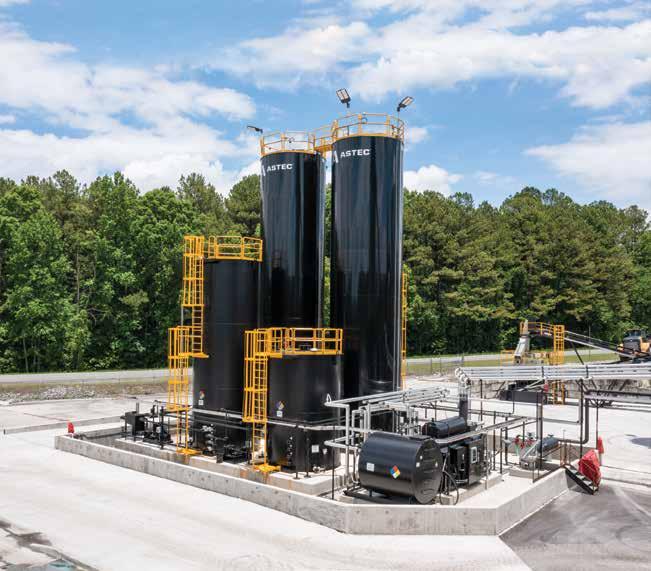
Scan QR code to see Astec’s full line of Tank Farm Components.
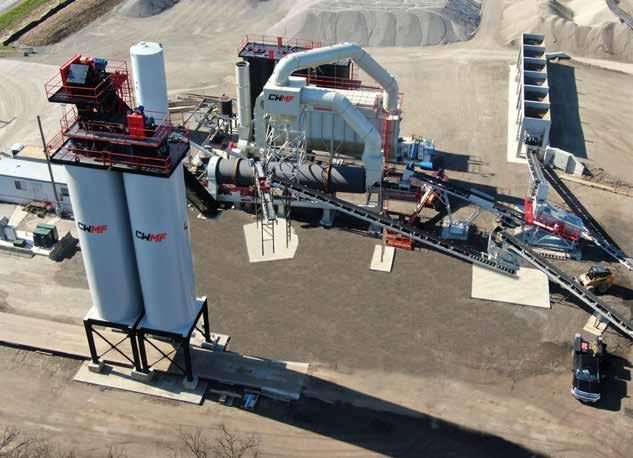

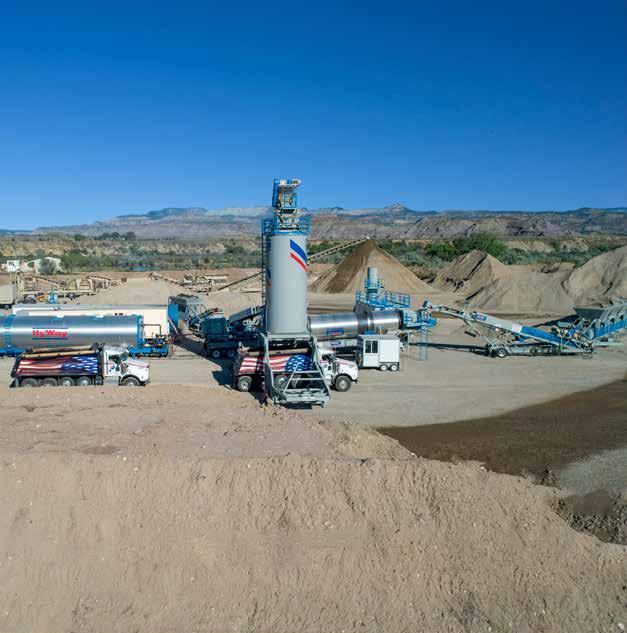
At Gencor, we’ve led the industry with the most fuel-efficient, environmentally clean and lowest-maintenance design available to the hot mix industry. Gencor Industries remains focused on proactively serving and satisfying its customers from all aspects. Through improved cost-effectiveness, and quality of its products and services, Gencor’s personnel are dedicated to the principle of providing the highest quality to the industry to maintain a sustainable competitive advantage for Gencor.
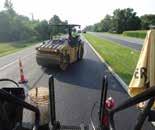

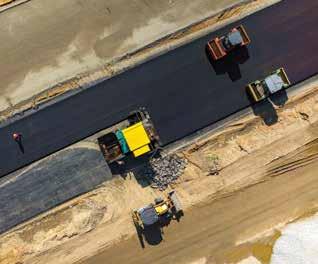

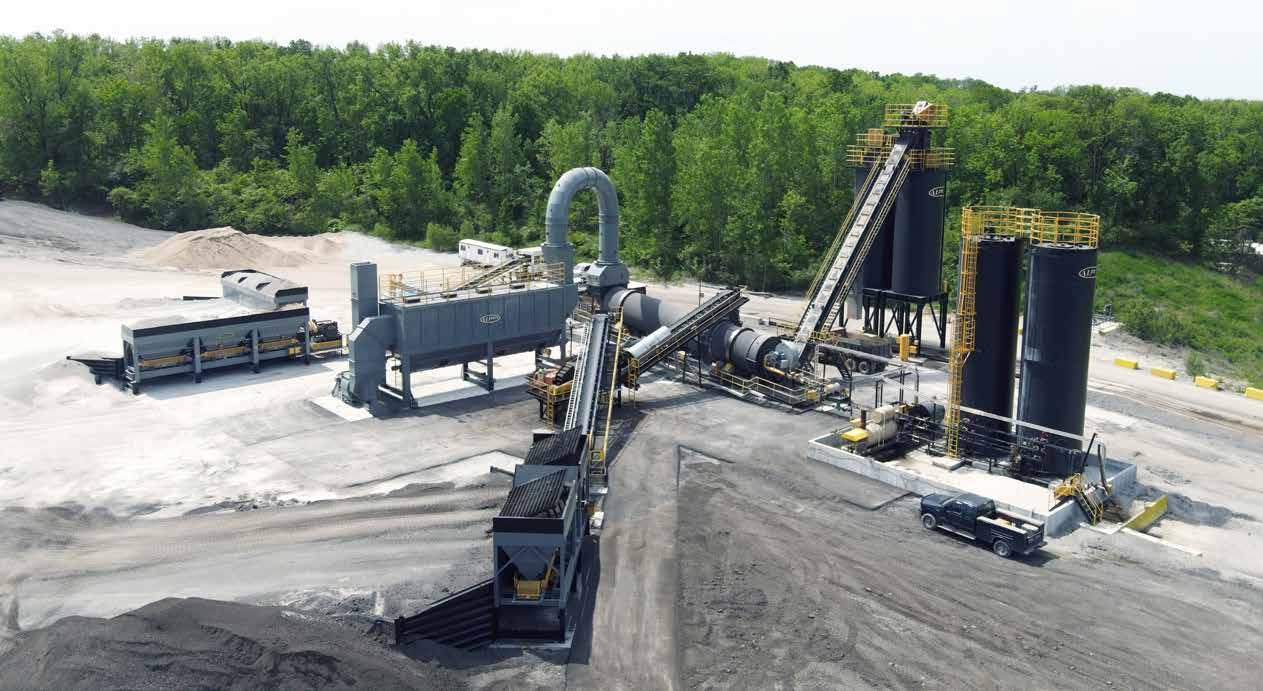
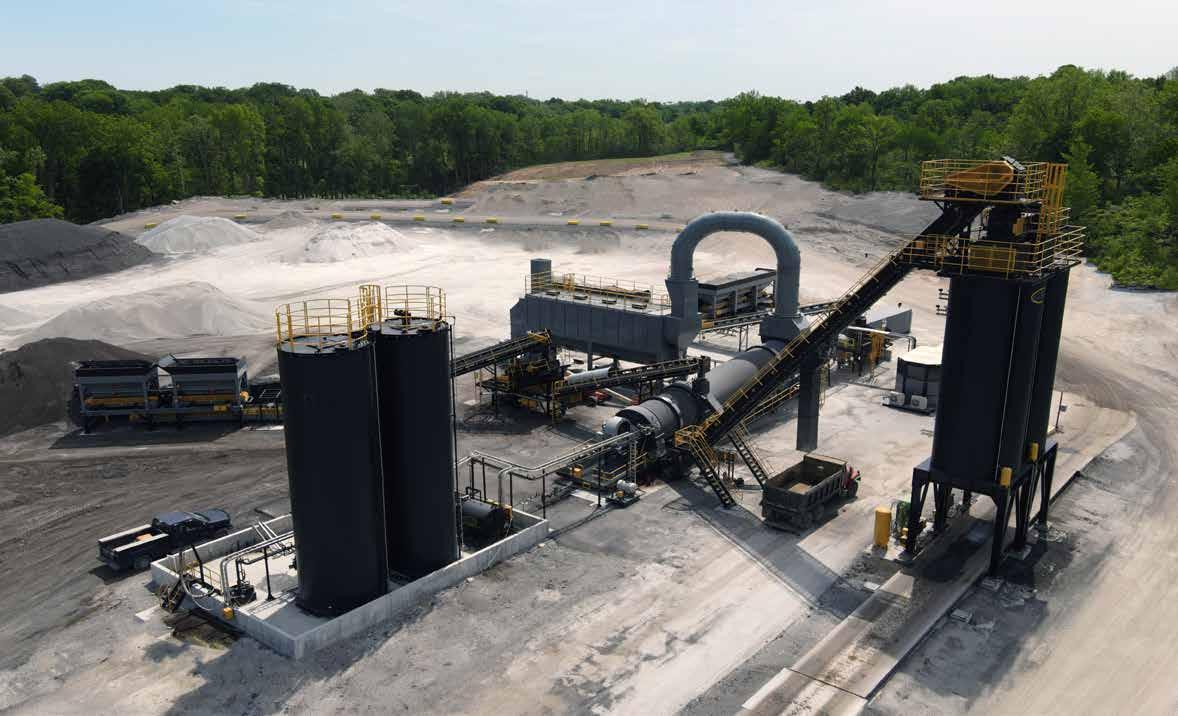


Those of you who read these notes on a regular basis know I admit to re-writing and editing the living daylights out of them prior to publication. I tend to obsess. Count this treatise on sensor and wiring updates among those receiving the obsessive-com pulsive disorder treatment before upload because, true to form, I felt the need to extrapolate the minor inconvenience taking place in my life onto the entire industry.
Here we go.
If you own or operate a hot-mix asphalt (HMA) plant, you’re keenly aware of the benefits of automating the control of that plant. Updating blending systems that store and measure out ingredients for multiple mix designs is a smart business practice. Setting alarms that alert you to maintenance schedules as well as potential failure of a belt, weigh pod or what have you is a good business move. I could take up this entire note spelling out the positives for your bottom line after installing or updating operating system features, fleet manage ment software, safety cameras, silo loadout systems, and so on.
But have you stopped to think about the wiring carrying the messages and data? Have you considered the sensors that function like synapses in a brain? Maybe I’m being a touch melodramatic, but old, 1970’s wiring knotted up in a rusting controls cabinet with stutter ing motors and failing amperage draw won’t safely and reliably carry the loads that today’s robust controls systems demand. And before anyone gets offended by my suggestion that something made in the 1970s is “old,” please note I was born in 1970 and too often have mo ments that feel a bit ancient.
Take my internet troubleshooting skills as an example for all of the above. When a per son—whether she’s a magazine editor or not—has exhausted her skills for bringing a mo dem back online, it’s time to bring in the experts. When they suggest new equipment (ie, controls) to solve the problem, yet that equipment doesn’t solve the problem, one must look at the wiring. While the house I live in is not quite as old as I am, I’ve got some questions about the electrical infrastructure leading to the rotting pole at the corner of my property. I share this to point out: there would be no point in replacing the modem and router in the AsphaltPro Magazine editor’s home office if the internet service provider did not also re place the faulty box and wiring on the pole outside.
Are you planning an upgrade to your HMA plant controls system to enhance produc tivity and profits? Make sure the wiring and sensors feeding power to and from that new system are up to snuff. Make sure they can carry the load and keep you at full capacity, full production for full profit potential.
Stay Safe, Sandy Lender

602 W. Morrison, Box 6a Fayette, MO 65248 (573) 823-6297 • www.theasphaltpro.com

Chris Harrison
chris@ theasphaltpro.com
Sally Shoemaker sally@theasphaltpro.com (573) 823-6297
Sandy Lender sandy@theasphaltpro.com (239) 272-8613
Sarah Redohl sarah@theasphaltpro.com (573) 355-9775
Cara Owings cara@theasphaltpro.com (660) 537-0778
BUSINESS MANAGER
Susan Campbell (660) 728-5007
AsphaltPro is published 11 times per year. Writers expressing views in AsphaltPro Magazine or on the AsphaltPro website are professionals with sound, professional advice. Views expressed herein are not necessarily the same as the views of AsphaltPro, thus producers/contractors are still encouraged to use best practices when implementing new advice.
SUBSCRIPTION POLICY: Individual subscriptions are available without charge in the United Sates, Canada and Mexico to qualified individuals.
One year subscription to non-qualifying Individuals: United States $90, Canada and Mexico $125.00. For the international digital edition, visit theasphaltpro.com/subscribe/

The Passive RFID (radio frequency identification) Armour Safety Sys tem from Scan-Link Technologies, Burlington, Ontario, not only aims to help equipment operators detect nearby ground workers, but the system can also be used to identify recurring events and help compa nies get to the bottom of these potentially hazardous behaviors.
Scan-Link President Jonathan Fava shared the story of one customer who no ticed one employee in particular was caus ing a lot of alerts while wearing the RFID tags of the system. Management spoke with the individual to ask why he frequently found himself so close to various machines. The employee explained that, as the flagger, he often got up on the float to help load the machine. Only after recognizing this be havior were they able to get to the bottom of it and equip that employee with a safer way to perform his job and update its safety protocols and training procedures.
“It’s not enough just to learn how acci dents have happened,” Fava said. “The next step is to analyze data in order to prevent them from happening.”
Scan-Link’s Passive RFID Armour Safe ty System is designed for rugged environ ments ranging from construction and quar rying to forestry, oil and gas, and waste management, and partners include Cater pillar and the Texas Department of Trans portation, to name a few.
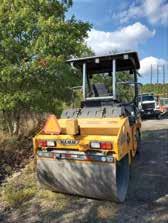
TxDOT Supervisor David Saucedo first introduced Scan-Link for the east Bex ar County maintenance section and was quickly able to see opportunities to mini mize risk. For example, Saucedo said the technology helped them realize detections increase after lunch during the hottest part of the day as workers become more fatigued and sometimes complacent.
“Scan-Link has helped us make great changes in the way we train employees,” Saucedo said. “It is a great tool that is now used to help coach employees and help change habits to keep the safest work envi ronment possible.”
The Scan-Link Passive RFID Armour Safety System consists of several components. Machinery is equipped with an antenna mounted on the back of the machine, an incab display with audio and visual alerts for the operator, as well as an external alarm to alert ground personnel when they are detected in the danger zone.
The system is designed to reduce the proba bility of a struck-by accident by monitoring employees wearing Passive RFID-equipped personal protective equipment (PPE) and alerting equipment operators when these employees find themselves located in the “danger zone” behind a piece of equipment. The goal is to increase the probability that tagged personnel working in close proxim ity to mobile equipment will be detected, operators can exercise extra caution, and ultimately to correct unsafe behaviors like in Fava’s above example.
In order to do so, the Scan-Link Passive RFID Armour Safety System consists of sev eral components. Machinery is equipped with an antenna mounted on the back of the machine, an in-cab display with audio and vi sual alerts for the operator, as well as an ex ternal alarm to alert ground personnel when
they are detected in the danger zone. The system can detect employees wearing ScanLink’s passive RFID-equipped PPE within a range of 20 to 30 feet.
PPE options include safety vests in sev eral colors and types, each equipped with at least 14 discreet Passive RFID tags be hind 3M reflective tape, and Armour Hard Hat Kits to convert almost any standard hard hat into an Armour-compatible de vice, with 10 weatherproof, sweatproof Pas sive RFID tags per kit. Passive RFID tags re quire no batteries and no maintenance once installed.
Scan-Link also offers a Tag Health Tester to verify all apparel tags are present and functioning properly and allows for assignment of apparel ID to employees, whereas testing the apparel with the antenna can only confirm that at least one tag is being detected.
The Passive RFID tags are placed 360 de grees around the worker to maximize the possibility of detection. Scan-Link said the ability of the system to detect a tag will vary with tag orientation, movement, mounting surface, moisture content, line of sight and proximity to the human body, but that us ing multiple tags “means that detection of a worker becomes less dependent on their orientation as compared to a single tag style system.”
By using Passive RFID technology, Fava said Scan-Link aims to reduce instances of the system “crying wolf” and setting off the alarm for walls or other obstacles. “Our sys tem only goes off when it detects a worker wearing RFID-tagged PPE, so the operator knows the alarm is going off for a person, and not a random object,” Fava said.
When the antenna detects an Ar mour-compatible piece of PPE within range, it transmits this information to a dis play unit near the equipment operator that uses both LED lights and an audible alarm with adjustable volume to alert the operator of that worker.
Designed with safety and operator comfort in mind, the SB-3000 Shuttle Buggy ® material transfer vehicle features adaptive cruise control, bright LED lighting, four-wheel steering for easy transport and ground-level maintenance access for added convenience. Operators can rely on clear sightlines and the ground operator is safely protected inside the structure of the machine. The Roadtec SB-3000 is the perfect blend of traditional craftsmanship and modern technology.
Scan to learn more about the SB-3000.

When the system detects any Passive RFID-equipped apparel within its range, it will also set off the Armour system’s exter nal alarm, mounted on the outside of the mobile equipment, so workers in the vi cinity will also hear the alert.
“The alarm drives ground personnel away from the equipment,” Fava said, shar ing an example of a person standing too close to an automatic door. “After it opens a few times, your natural instinct is to move away from the door so it doesn’t de tect you again. That’s exactly what happens when ground workers set off the external alarm a couple times. It helps workers un derstand the danger area and change their behavior.”
Scan-Link also offers a passive Marker Tag to alert equipment operators as they approach inanimate objects equipped with Marker Tags, such as pipes, bridge columns, open pits and more. The audio prompt for when a Marker Tag is detected is unique, so equipment operators can easily differentiate between people and objects.
Fava said it’s also possible to mount the antenna on the front of equipment, for example, a paver or roller. Although visibility may not be such an issue for forward-moving machinery, tracking detections can lead to behavior changes and improved training to prevent employees from entering blind spots.
The antenna records and stores usage data, such as the number of detections, time and date of detection, location, apparel type and tag type of every detection event. Since each vest and hard hat kit has a unique ID, com panies can cross-reference apparel IDs with antenna data logs to identify which employ ee was detected for each event.
In addition to Fava’s example, this data can also be used to identify hot spots where machines detect people most frequently.
“Using this data, customers can identify ar eas where a struck-by incident is most likely to occur,” Fava said.

This enables customers to make decisions that will decrease the risk of an accident from happening. For example, they could move the location of materials so workers don’t have to walk in a machine’s workspace or put up signage warning employees of high-risk areas.
“If you’re just using the [system] to prevent struck-bys but you’re not changing the behav ior, you’re just solving the same problem day after day,” Fava said. “To eliminate struck-by incidents, you have to know the root cause.”
“By having the data, the health and safety team is able to make positive and permanent changes to the company’s safety culture,” Fava said. “Success is not in detections, but in driv ing the number of detections to zero because employee behavior has changed.”
In the future, Scan-Link intends to release an application for smartphones and tablets to make the data its system collects more easily accessible.
From innovative designs to Caterpillar dealer service and support, Weiler is paving the way to success for contractors across North America. Weiler’s material transfer vehicles, commercial pavers, road wideners, windrow elevators, static compactors, soil stabilizers, rock drills, tack distributors and front mount screeds are engineered with innovative features to increase productivity while reducing operating costs.
Weiler equipment is sold and serviced exclusively at Caterpillar dealers throughout North America.
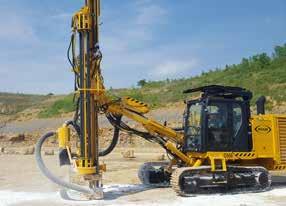
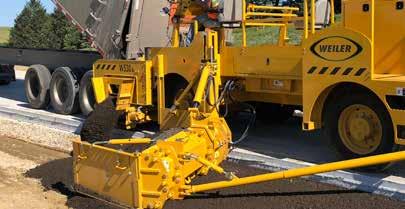
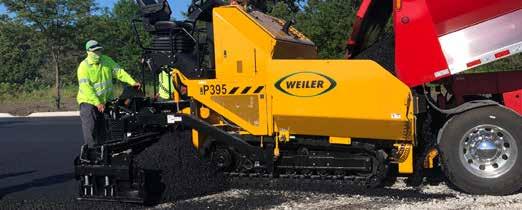

 BY JULIAN SMITH
BY JULIAN SMITH
The asphalt industry has come a long way in its sustainabili ty journey. In accordance with a goal set by the National As phalt Pavement Association (NAPA) to achieve net zero carbon emissions by 2050, many players in the industry have found ways to substitute parts of the asphalt mix for best sustainable practices. Hars co Environmental’s SteelPhalt division, headquartered in South York shire, United Kingdom, uses a unique aggregate to make up most of its asphalt product—steel slag. See the article titled “SteelPhalt Gives Steel Slag a Second Life” in the February 2022 issue for more information. Because it uses steel slag, a byproduct of steelmaking, SteelPhalt asphalt products remove the requirement of mining for aggregate material. However, SteelPhalt committed to advancing further on its road to developing more sustainable asphalt products. Bitumen was the next part of the asphalt mix to tackle. A commonly used re placement for this asphalt binder is recycled asphalt, including re cycled asphalt shingles (RAS).
Every year, according to the National Association of Home Builders, anywhere from 7 to 10 million tons of tear-off waste and installation scrap is generated in the United States alone. That means recycling the 19 to 36% of asphalt content found in the shingles into asphalt binder has been an attractive means to keeping shingles out of landfills. How ever, asphalt oxidation and the cost of cleaning and recycling tear-off shingles are legitimate concerns when using RAS as an alternative to bitumen. So, SteelPhalt looked instead to another, more natural binder to fit its environmental needs: lignin. As one of the main components of trees, lignin is a strong, sustainable alternative to a percentage of the bitumen in its mix.
Using lignin as an asphalt binder and replacement for part of a bi tumen mix is not a new concept unique to SteelPhalt; however, Steel Phalt is the first company to mix lignin binder with steel slag aggregate. Stora Enso, headquartered in Helsinki, is one of the largest private for est owners and in collaboration with GautamZenUK has supplied as phalt companies with Lineo® kraft lignin to partially replace bitumen.
Discover the strength of the most versatile, durable, and reliable crushing equipment on the market today. Take on even the toughest applications with confidence. Experience unparalleled parts and service support, 24/7.

Eagle Crusher keep you up and crushing, year in and year out.
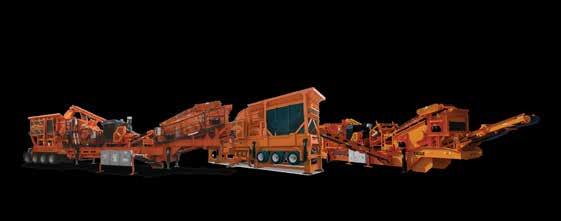
All the components in SteelSurf ECO+ asphalt lend themselves to the environmentally friendly product in multiple ways.
SteelPhalt’s products already contain 95% recycled aggregate from the steelmaking industry. This recycled steel slag is a natural byproduct of the steelmaking process, and it would otherwise go to landfill or be used in low value materials if it were not reused in large-scale productions, like asphalt. The remaining 5% of the as phalt mix is the bitumen binder. Historically with SteelPhalt prod ucts, this bitumen has been sourced from refining of crude oil and has in turn been a significant contributor to the asphalt’s carbon footprint.
Because binder is one of the key factors determining the perfor mance of asphalt pavement, the company had two main consider ations when sourcing more eco-friendly binder replacements for SteelPhalt asphalt products: usability and durability. With that in mind, SteelPhalt chose to replace some of the bitumen with lignin to create SteelSurf ECO+, further reducing the carbon footprint of the finished product as compared to other SteelPhalt products.
Lignin is one of the main building blocks of the tree and provides the second largest source of renewable carbon on the planet. Be cause it is renewable and bio-based with carbon absorbing proper ties, it is believed lignin can be used as a responsible alternative to many fossil-based materials, including bitumen, in asphalt.
Lignin comes in powder form, so it is mixed with a small amount of rapeseed oil to condition it for use in SteelSurf ECO+ and allowed to bind the steel slag aggregate similarly to standard bitumen. While the company’s asphalt is traditionally mixed at 302-356°F (150180°C), lignin is adversely affected by heat, so it requires warm-mix asphalt (WMA) temperatures of 275-293°F (135-145°C).
The main sustainability draw of the lignin is its renewable nature and ability to absorb carbon as a main component of trees; however, an added benefit of the low temperatures of the WMA is savings in energy expenditure.
From ideation to execution, the technical and sustainability teams at SteelPhalt spent one year researching and developing SteelSurf ECO+. Rather than relying on extensive lab testing to identify the ideal formula, SteelPhalt took SteelSurf ECO+ to the roads of Rotherham, South Yorkshire, in the United Kingdom, to conduct a double-blind study on the efficacy of the steel slag and kraft lignin asphalt product.
In partnership with the Rotherham Borough Council, Steel Phalt paved a stretch of road in Broom Lane with different mix es of the asphalt. Two of the test asphalt products were SteelSurf ECO+ with varying amounts of bitumen replaced with lignin. As a control, the third asphalt tested was a standard SteelSurf mixture with steel slag and 100% bitumen. In total, just over 132 tons (120 tonnes) of 3/8-inch (10 millimeter) steel slag surface course ma terial was supplied from SteelPhalt’s Rotherham plant to Broom Lane, Rotherham.
During this study, those testing the product without prior knowl edge of which product had the lignin binder in it could not tell a dif ference between the asphalt with the lignin binder and the asphalt without the lignin binder. Additionally, researchers found no dis cernable difference in ease of compaction and workability among
the asphalt products despite the different temperatures needed to heat the asphalt.
On its own, asphalt mixed with steel slag and bitumen holds up well to normal and commercial wear and tear. The strength and durability of steel slag extends its life and decreases the amount of maintenance it needs while also maintaining high skid resistance. With some of its bitumen replaced with lignin, these core properties of SteelPhalt’s products remain true.
During the blind study in Rotherham, smell was the only differ entiator, as the asphalt mixture with a lignin component smelled like trees when heated.
More supply trials are planned from SteelPhalt’s Cardiff plant in the near future.
Armed with an eco-friendly asphalt with the same functionality of SteelPhalt’s other asphalt products, SteelPhalt is slated to expand its SteelSurf ECO+ production capabilities to new locations with in the next five years. These locations include the United States and two additional locations in North America, Brazil, Turkey, Portugal, Spain and the Netherlands.
When choosing locations for pilot projects, SteelPhalt looks to ar eas with leaders who are willing and excited to integrate eco-friendly asphalt products into their jurisdictions. Additionally, SteelPhalt looks for areas with steel mills that have steel slag available for SteelPhalt to use to prevent unnecessary use of mined aggregates. This public-private partnership between local governments, SteelPhalt, steel mills, and now GautamZenUK and Stora Enso is vital to upgrading the world’s road ways to improve the planet’s overall carbon footprint.
Passion for sustainability pushes SteelPhalt to achieve aggres sive targets for its carbon footprint through continuous innovation. SteelSurf ECO+ is one of the products SteelPhalt uses in its lineup of asphalt products that further the company’s goal of making the asphalt industry one of the most sustainable industries across the globe. This is a goal the company is not only happy to share but also excited to lead among asphalt producers.
With SteelPhalt’s reputation for sustainability, innovation and high-quality products, SteelSurf ECO+ is a welcome addition to its portfolio that will help the company continue its aggressive growth toward NAPA’s carbon goals.
Julian Smith serves as strategic growth director for SteelPhalt and is responsible for growth of existing SteelPhalt footprint and supporting its global expansion strategy. Julian joined Harsco in 2019 and has over 20 years of industry experience.

Adding recycled plastics to its hot mix and warm mix asphalt is just one way P&S Paving is prioritizing sustainability at its asphalt plant in Daytona Beach, Florida.

When a customer came to P&S Paving, Daytona Beach, Flori da, in 2020 with the idea to add recycled waste plastics to the hot mix as phalt (HMA) for an upcoming parking lot project, Director of Quality Control Tim Carter was intrigued.
He was familiar with the use of recycled waste plastics in asphalt via the wet meth od, where a plastic additive is blended into the asphalt binder as a polymer modifier or percentage replacement at the terminal. However, he was less familiar with the use of recycled waste plastics via the dry meth od, where a plastic additive is added direct ly into the mixture at the asphalt plant as a mix modifier, binder modifier, aggregate coating, or aggregate replacement.
“Up to this point, the use of plastics has overwhelmingly occurred at the terminal,”
Carter said. “As the contractor, I’d just order the binder with [the plastics/polymers] al ready blended and suspended in it.” To utilize the wet method at the plant would require equipment that is often cost-prohibitive, he added. That’s why the dry method, which of fers an affordable way to introduce recycled plastics at the plant while being able to con trol the rate directly, captured Carter’s inter est. P&S Paving took up the challenge.
The pilot project took place at a commercial center parking lot near Flagler County Mu nicipal Airport in northeastern Florida. The engineer on the project wanted to repave the parking lot with 1.5 inches of a 9.5 mm Su perpave mix with 1% recycled waste plastic by total weight of binder. Carter began re searching the dry process P&S hoped to use and discovered a product called NewRoad®,
by NVI Advanced Materials Group, that had been tested at the National Center for Asphalt Technology (NCAT) test track in 2020.
“The U.S. has a surplus of waste plastic ma terials of different varieties, but not all are good for use in HMA and warm-mix asphalt (WMA),” Carter said. NewRoad, the prod uct P&S decided to use, is categorized as a high-density polyethylene (HPDE) and is similar in size and shape to “the beads kids use to make homemade jewelry,” Carter said. “Only they’re all black and made of engi neered recycled plastics.”
Carter said there are a number of ways to meter the plastic beads into the mix, includ ing adding them into the RAP collar manu ally via a conveyor system with a hopper, or with a fiber machine. P&S opted to use its HiTech Asphalt Solutions Model 9000 fiber ma chine, manufactured in Mechanicsville, Vir ginia, to feed the plastic into its pugmill.
When P&S invested in an Astec Double Barrel XHR plant back in 2015, Carter knew the pugmill would be integral to the plant’s ability to produce high recycled asphalt pavement (RAP) mixes (up to 65%), but has since discovered its value to the process of adding recycled plastics.

When P&S invested in an Astec Double Barrel XHR plant back in 2015, Carter knew the pugmill would be integral to the plant’s ability to produce high recycled asphalt pave ment (RAP) mixes (up to 65%), but has since discovered its value to the process of adding recycled plastics.

“Our fiber machine works on a blow er system and blows the material [into the pugmill] at a calculated rate,” Carter said. To calibrate the rate, Carter timed how long it took to blow a set amount of the beads into a 55-gallon drum. “To achieve 2% of total binder content required metering in
7 pounds per minute at 200 tons per hour, our production rate for this project.”
The mix design for the pilot was designed at P&S’s lab and was a 9.5 mm TLC Super pave design using 45% RAP (40% coarse, 60% fine), with 5.5% liquid AC PG52-28 with recycled plastic beads equal to 1% of total binder content. Although P&S only added 1% for this project, Carter said his research reflects rates ranging from 1 to 10% worldwide.
NVI chose to focus on dry method plastics for a number of reasons, firstly, ease of blending.
“Plastics and asphalt are both petroleum products, but they like to separate unless you’ve done the chemistry to make sure they stay blended,” LaCroix said. “It can be done, but we’ve found that if we can blend the plastic at the asphalt plant, you can save that headache.”
“Secondly, it saves the producer from having another tank,” he said, “and most producers would like to reduce how many products they’re juggling.”
“Lastly, they can modify the dosage if they want to,” LaCroix added. “Maybe they want to use 2 pounds per ton on most jobs, but are paving a truck stop or heavy industrial project and want to up it to 3 to 4 pounds per ton.”
For example, on a recent project with the Iowa DOT, a bridge along I-80 was being rebuilt and the DOT needed some temporary lanes put in. “They’ve had some problems with temporary lanes falling apart in the summer heat and wanted the temporary lanes on I-80 to last through the next couple summers, while also reducing thickness,” LaCroix said. Ultimately, they were able to use 4 pounds of NewRoad per ton, and the temporary lanes are holding up well after one full summer of use.
Professor Fan Yin explains recycled plastics use in HMA to the ACAF Specifications Committee at the NCAT facility in March 2022 with bottles of polymers in the foreground. Photo courtesy of Tim Carter

Over the course of three days, P&S pro duced 743 tons for the pilot project at target temperatures between 300 and 315 degrees Fahrenheit. The melting point of the particu lar plastics P&S used is between 200 and 250 degrees Fahrenheit.
“That lower melting point makes sure they’ll integrate into the asphalt,” Carter said. “There are a variety of engineered recycled products, but we wanted one that would melt well for both HMA and WMA mixes.”
For instance, Carter continued, plastic from water bottles has a higher melting point than the plastomer and elastomer plastics Carter in vestigated. “Not all plastic is created equal. If you tried to add plastic from those bottles in this same way and expect it to integrate per fectly, you probably won’t be very successful.” However, he added, ongoing research is being done on effective methods to use a variety of waste plastics at NCAT in Auburn.
“We all know plastic production has in creased exponentially in recent years and is causing mass pollution,” Carter said. Add ing appropriate types of recycled plastic to asphalt mixes in the correct proportions and with proper methods not only diverts that waste from the landfill, but could potentially offer a number of benefits. “Not only does the
recycled plastic increase bond strength, but it also offers high rut and crack resistance and can be used as a binder replacement for any where between 2 and 4% of the liquid AC in your asphalt mix design while still achieving quality performance,” Carter added, citing testing from NVI Advanced Materials Group.
According to NVI Lead Engineer Andrew LaCroix, there are many ways to use recycled waste plastics in asphalt, from getting a better bond to replacing virgin aggregate. “Our fo cus is on performance, versus using as much plastic as possible,” he said.
That’s why NewRoad tends to be at the low er end in terms of dosing, at 2 pounds per ton of asphalt for a total of 0.1% weight of the total mix. “A little bit goes a long way, when you’re focusing on the performance side of things,” LaCroix said. When plastic is used as an ag gregate replacement, dosages range from 3 to 5%, on average, he added. “[Proper dosing] is based on the type of performance you’re try ing to get from adding plastics to asphalt.”
For improved strength and flexibility, NVI’s objective for NewRoads, LaCroix said polyethylene is the category of plastics most often used. “Polyethylene tends to be milk jugs, laundry detergent bottles, and other thicker bottles,” he said. Ultimately, the type of plastic used is mostly a matter of melting temperature, LaCroix said. While some plas tics melt at 200 degrees Fahrenheit, others re quire temperatures of 300 degrees or higher. “We want our products to melt at 250 degrees Fahrenheit or below, so our contractors can use it in warm mix and it still blends well.”
Plastics for NewRoad are mainly post-in dustrial plastics (90 to 95%), with the remain der coming from post-consumer sources. “Eighty percent of plastic waste is post-indus trial,” LaCroix said, which is why so much of the recycled waste plastics in NewRoad come from this category. “We also prefer to work with post-industrial recycled plastic because it tends to be more consistent, cleaner and easier to deal with.”
Post-industrial waste plastics might in clude recycled products that don’t meet the manufacturer’s requirements, for exam ple, during start-up and shut-down, mis takes and misprints of various plastic prod ucts, from bottles to plastic films. “By using that in NewRoad, we prevent it from going into the landfill.” One pound of NewRoad is
equivalent to 50 water bottles or 100 plastic bags, so the full 1,500-pound tote in which NewRoad is sold is equivalent to 75,000 wa ter bottles or 150,000 plastic bags. Or, by an other measure, a 2-inch overlay uses 150,000 bottles or 300,000 bags for one lane-mile.
Although the use of material otherwise bound for the landfill is important, so too is the performance of the mix into which plastics are added. “Many times, the use of NewRoad reduces rutting by half [on the Hamburg Wheel test],” LaCroix said. On a job with the Iowa DOT, for example, LaCroix said adding 2 pounds of NewRoad per ton re sulted in 4 mm rutting compared to 8 mm without NewRoad.
In terms of crack resistance, a 2017 trial project for the Iowa DOT also shows prom ising results. “They’re seeing hairline cracks in the wheel path of the control section, but the NewRoad section hasn’t seen any crack ing,” LaCroix said, “so it seems to be creat ing better bonds and holding things togeth er quite well.” Although NewRoad’s crack resistance performance on the IDEAL-CT test has shown varied results leaning toward a moderate increase in crack resistance, NCAT saw a 15 to 20% increase in crack re sistance when it performed some testing of NewRoad for NVI.
“The most challenging part of [using recycled waste plastic in asphalt] is when the contractor is evaluating it in the lab,” LaCroix said. “Usually, they just mix the samples until the aggregate is thoroughly coated, which usually takes only a minute, but we recommend they mix it for five minutes to better simulate what’s happening at the plant and ensure they won’t see any plastic chunks that would have thoroughly blended in the more aggressive mixing environment of the asphalt plant.”
The latest asphalt technology is a topic of particular interest to Carter, who is also the chairman of specifications committee for the Asphalt Contractors’ Association of Flor ida (ACAF). “I’m very interested in where our industry is headed and what we can be doing differently,” Carter said. In that role,
Accu-Load Gate-Keeper is a crucial safety device that provides a last line of defense against costly loadout mistakes
The system provides separate truck positioning sensors for each asphalt silo in your plant. These configurable sensors ensure that drivers position their trucks correctly under silo gates before the system will dispense material.

This added protection helps prevent costly cleanups and payouts for damaged vehicles. The system includes safety override buttons so operators can always perform maintenance tasks without obstruction.
Safety product

THE
MIX ON THE CAB.
he frequently discusses new ideas with col leagues in the paving industry and officials at the Florida Department of Transporta tion (FDOT). “The ability to embrace new technology is something I will personally be pushing as an agenda item.”
Although he’s only been in the role for a year, he’s already made important head way. One such victory was a change to FDOT’s smoothness specification. “It used to be that if you had smoothness deficien cies during the structural asphalt phase of paving, you’d have to create a 100-foot patch (50 feet on each side), which result
ed in two additional joints,” Carter said. “Now, the contractor is able to choose a corrective method, within reason, so that when we get to the friction course, we still end up with a high quality pavement but are able to get there more efficiently and with decreased cost.”
One example would be the use of a mill ing machine to repair not only high areas, but also low areas. “That was a huge para digm shift for a long-time complaint among contractors that has enabled us to gain more control over how we ultimately deliv er a quality product to the department.”
Incorporating recycled waste plastics into its asphalt mixes is just one way P&S Paving is pushing the envelope on environmentally friendly practices at the asphalt plant. Since investing in its Astec Double Barrel XHR plant in 2015, Carter has experimented with high RAP mix designs and is frequently able to produce 65% RAP mixes.

“The ability to reuse recycled asphalt reduces the amount of virgin liquid and virgin aggregates we have to purchase, which is particularly relevant in today’s environment with supply chain issues,” Carter said. However, there are a number of factors limiting P&S’s RAP usage, including weather conditions, material variability and specification limits. “Our ability to run 65% RAP is environmentally controlled because we need to have dry materials and we aren’t able to always do that because it rains every day at 3 p.m. in Florida during certain parts of the year,” Carter said.
Variability of construction materials is another limiting factor. “Like other contractors, our RAP sources are a function of the contracts we win,” Carter said, adding that some older roads may not have the same quality of materials used today. For example, some of Florida’s earliest roads even used shells. “Higher RAP opens you up to
variability with your end product, because the material varies.”
That’s one reason why P&S fractionates its RAP, Carter said. “We can adjust down to some of those variabilities and utilize other materials to make adjustments to keep everything within the goalposts of the spec.”
“Everything gets used somewhere,” Carter said.
“Maybe the material doesn’t qualify for use in asphalt, but it might make a great road base.” He gave the example of milling too deeply and getting into limerock, which is too dirty for asphalt production. In 2018, P&S expanded its operations to crush concrete for base material. “We want to be able to use every bit of the pig.”
The company also conducts training in stockpile management with the staff. “To keep our stockpiles as clean and consistent as possible, we want everyone to be able to identify what is and isn’t okay to go into our RAP pile for asphalt production and what should instead go into our stockpile for road base materials.”
Despite weather and material variability, Carter has been able to produce an 85% RAP HMA that met all volumetric properties when
More recently, FDOT issued a District Construction Engineer (DCE) memo in June 2022 to allow for a temporary increase in the amount of RAP that can be added to poly mer-modified mix. Although FDOT doesn’t have a set RAP limit for unmodified mixes so long as they meet all volumetric properties, the department does have a limit for poly mer-modified mixes. “Over the years, it’s in creased from 20%, to 25%, to 30% last year,” Carter said.
“With the supply chain issues we’re facing nationally and our inability to sustain regu lar shipments of aggregates from out of state,
To overcome variability of construction materials, P&S fractionates its RAP so it’s easier to make mix adjustments to remain within spec.
conditions have been ideal. Then, it comes down to specifications of the project. Unlike the weather or what the roads of yesteryear were made of, that’s something that can be changed. Like the June 2022 FDOT memo allowing for up to 40% RAP in polymer-modified mixes.
Not only does Carter expect RAP use to increase at the DOT level as a result of the memo, but he also expects RAP use to increase at the city and county level. Although some municipalities still consider high RAP to be 15 to 20%, Carter said it’s quite common for municipalities to follow the DOT’s lead. “We’re using RAP in our DOT jobs more than ever, and since our local municipalities often defer to what the DOT is doing, we’re going to be using more RAP than ever across the board.”

Designed around real people.
“The plant control system that MINDS designed for us has worked very well. The graphics depict the plant almost identically as built and are very easy to follow from the control room. Each value is shown with its position indicated by colours that make identifying issues, such as a stuck valve, extremely easy. The materials that we have produced with the system have been very consistent from the first production run.”
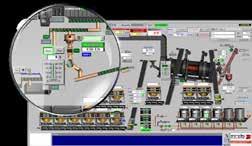 Allen Hendricks, Vise President, Asphalt Divisions Manager Blythe Construction, Inc.
Allen Hendricks, Vise President, Asphalt Divisions Manager Blythe Construction, Inc.
For the past 25 years, MINDS has built a reputation for user-friendly, advanced, customizable plant automation control systems. As of April 2022, we became part of the Astec family to add to their Rock to Road solution for asphalt road building. MINDS provides award-winning desktop software, mobile apps, and hardware for many applications:
Drums, Batches, Combo/hybrid hot mix plants, Emulsion plants, Liquid Terminals.
Silo load-out, Ticketing, and Cloud-based data management for the Rock to Road industry.
Better data.
control.
profits.
P&S incorporated NewRoads into the 743 tons for the pilot project near Flagler County Municipal Airport at 2% of total binder content.
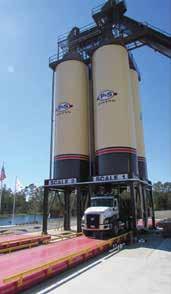
the department has listened to our cries for help and has issued a new DCE memo to allow up to 40% RAP in polymer-modified mixes,” Carter said. “It’s only temporary, but this provides us an opportunity to gather data as we produce this mix and test its per formance in real life settings so we can use that information for continued discussions in the future.”
Carter said he also hopes to gather more data on the performance of dry process re cycled waste plastics for HMA and WMA and plans to do several more pilot projects in the next 8 to 12 months. “Ultimately, I’d like to see this [dry process] integrated into the state DOT system, but in order for that to happen more research needs to be done,” he said. “I’ve talked quite a bit to top officials in the DOT materials department and they’re very aware of this idea. And if the DOT starts to allow the use of recycled plastics, we might also begin to see that idea take hold at the county and city level.”
Whether enabling contractors to select a rideability repair method, increasing RAP limitations, or investigating methods to in tegrate additives at the plant, Carter said he is passionate about ways to give contractors in the state of Florida more control.
LaCroix said the use of recycled plastics in asphalt seems to be catching on first and foremost in the commercial market. However, as cities, counties and state DOTs see those projects succeed, LaCroix expects the use of recycled plastics to increase.
“Anytime you have something new and different, the process to change specifications to allow that tends to be slower for cities, counties and state DOTs,” he said. However, NVI and other manufacturers are making progress, putting down trial projects, and gathering data. “No one wants to be a guinea pig, but
we have test roads dating back five years. They’re no longer the guinea pig.”
As the industry investigates balanced mix design (BMD), as well as environmental product declarations (EPDs), LaCroix said recycled plastics could play a role in those conversations. “The [agencies] don’t want to spend taxpayer money figuring out which ones work and which ones don’t,” LaCroix said. “But with BMD, as long as [the mix] meets certain criteria, they can feel confident moving forward with new ideas.”
“In terms of the EPD conversation, the biggest bang for a contractor’s buck is still using more RAP,” LaCroix said. “But, with BMD, contractors will be able to increase RAP content while also using additives like NewRoad
“There are old ideologies that limit the contractor’s control over this or that, but the relationship between contractors and the DOT was different back then,” he said. “Now, we have a much stronger partner ship, a much better understanding of the mechanics of asphalt, and a lot of educat ed people in our industry and technology on our side.”
“We’ve come a long way,” Carter said. “Now, we need to be able to spread our wings and try new things in order to pro duce better quality pavements.”
NewRoad was used on a recent project, the Southeast Polk High School parking lot in Des Moines, Iowa. The whole 16-acre parking lot was overlayed with 2 inches of mix modified with NewRoad, requiring a total of 8,000 tons of mix incorporating the equivalent of 800,000 water bottles.
to help prove that higher percentages of RAP can meet the DOT’s performance criteria.”

“WE WANT EVERYONE TO BE ABLE TO IDENTIFY WHAT IS AND ISN’T OKAY TO GO INTO OUR RAP PILE FOR ASPHALT PRODUCTION AND WHAT SHOULD INSTEAD GO INTO OUR STOCKPILE FOR ROAD BASE MATERIALS.”—TIM CARTER



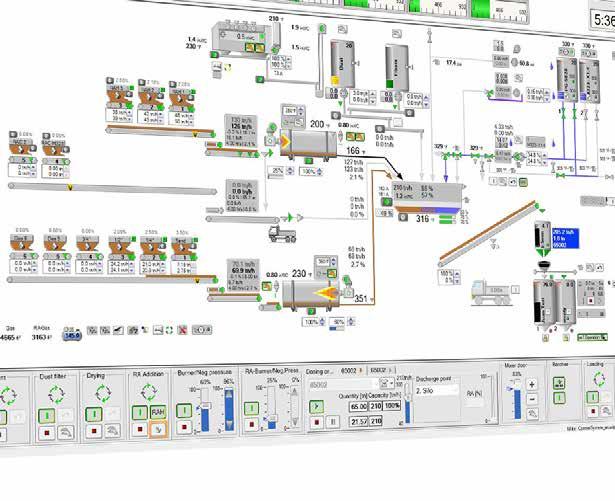
For construction companies of every size, the pandemic accel erated the shift toward hybrid information technology solu tions that facilitate both remote and in-office communica tions between customers and employees. In the marketplace today, this involves mobile and office phones with integrated software that offer sophisticated voice, video, messaging, and workforce manage ment capabilities.
This has augmented the complexity of the phone system require ments and presented construction businesses with a plethora of op tions. Whether users usually operate from office phones or mobile devices, they’re working both in and out of the office, so there is a demand for forwarding messages to avoid missing calls.
Also, a host of new services beyond calling are often expected such as Short Message Service (SMS)/Multimedia Messaging Ser vice (MMS), video conferencing, visual voicemail and call record ing. On top of all this, the phone system is increasingly connected through APIs to existing company systems such as contact centers, workforce management and Customer Relationship Management systems (CRMs), so important data can be monitored and evaluat ed in various ways.
The challenge for construction companies, however, has been dealing with issues of quality and integration, along with constantly escalating provider prices and add-on fees that can end up costing over $70 per user each month. When managers need the services to stay operational but do not have the time or inclination to sort through complex billing, they can feel like a captive of their tech nology provider.
“Today, construction business owners feel besieged with all the software-as-a-service fees, which constantly creep upwards, never downwards in cost. They are enticed with low offers to start, and then the price doubles or triples on renewal or any changes,” said Eric Brackett, President of BTI Communications Group, a technol ogy convergence provider serving the business and logistics sectors. The company acts as a single-source provider of complex phone (VoIP), network, and physical security systems, down to installa tion of wiring and conduit as well as cybersecurity monitoring and protection.
“Bait-and-switch phone system pricing is a huge burden on con struction businesses when it becomes overhead and an operating expense,” he added. “Instead, managers want to capitalize the full cost over a few years or own the system with minimal operating expense.
“Business owners and managers appreciate having only one line item on the bill that covers everything. When the prices don’t change for a fixed period, this eliminates the issue of escalating ex penses and surprise add-on costs,” Brackett said.
He noted that such a system can improve both the customer and employee experience by integrating web services including voice, video, SMS/MMS, smartphone and PC, as well as contact center, CRM, and workforce management.
“Today, a construction business phone system needs to enable working from anywhere, whether at the office, at home, or on the
go, and offer the full breadth of communication technologies,” Brackett said.
He added that some of the more advanced marketplace options are now easier than ever to incorporate and use. These allow business employees to use their own smartphones without purchasing new equipment since the service functions with almost every cellular pro vider. To streamline use, a web portal can enable users to take control and easily manage the entire system through a simple interface. Vid eo conferencing also facilitates collaboration anywhere on any device, and some or all calls can be recorded and retrieved as needed.
Astral Energy of Montvale, New Jersey, buys energy wholesale and sells it retail to over 15,000 businesses in the B2B market. Ashton Fox, chief operating officer of Astral Energy, sought a more robust, stable solution than his existing telecom service provided.
“Many of our customers work off their smartphones on the road so texting and multimedia messaging is important to communicate with them,” Fox said. “If our customers struggle to reach us or we are chal lenged to reach them because of our phone system, it doesn’t work.”
As a solution, Fox and Astral Energy turned to a new option in the business market called GoodPhone by BTI that provides com plete web, voice, video, SMS, MMS, CRM, contact center, and work force management service and integration for customers and em ployees. The service functions on smartphones and office phones, as well as on PCs used as phones.
When employees use their personal smartphone by downloading the GoodPhone App, they no longer need to give out their personal cell information to handle business calls. Instead, they can provide clients with one office number to reach them, and make or take calls from their web phone, mobile app, or desk phone while always dis playing the office number.
“Employees only give out one business number and all calls and texts stay within the GoodPhone portal on their smartphone or PC app. If a customer calls their number and they don’t answer it on their smartphone, the call can be routed to the company voicemail, not their personal voicemail,” Brackett explained.
The service also allows businesses to text promotions and con tact customers via SMS and MMS messages, as well as track the re sponses. Employees can monitor messages and set auto-responses with customized text from one account. The service facilitates re solving customer issues by enabling the search of text archives with a 360-degree view of customer interactions. When video conferenc
“EVEN AFTER HOURS, WE CAN TRANSFER CALLS TO OUR SMARTPHONES. THIS HAS TRANSLATED INTO BETTER CUSTOMER SUPPORT AND MORE SALES.”—ESMERALDA MACIAS
ing is required, the service currently allows up to 1,000 people to participate and up to 25 to share a screen.
“I’m able to manage my team more effectively with the ser vice,” Fox said. “For instance, if there’s an issue with a customer on a phone call, I can quickly pull the recording on my phone to help resolve it.”
Other businesses are also finding value in simplifying the complexity of their phone systems at a low, flat monthly rate.
Market Contracting Services, a construction firm in Chica go, Illinois, had remodeled their facility and planned to pur chase costly landline phones for the office, but reconsidered when their technology integrator suggested a better option, ac cording to Esmeralda Macias, the firm’s office manager.
“With the new VoIP smartphones BTI has available, we don’t have to pay for landlines. We can see everything online now through a portal, so can view all incoming and missed calls,” Macias said.

According to Macias, employees no longer have to sit at a desk to take calls since they can do so anywhere they have an internet connection.
“Even after hours, we can transfer calls to our smartphones. This has translated into better customer support and more sales,” she said.
From a budgetary perspective, the VoIP phone system has also been a success. The system not only eliminated current carrier bills, but also included unlimited local and domestic long distance.

“The landline phones and service were going to cost a lot more. By implementing GoodPhone, we are already way ahead financially—and we are just getting started with using the capa bilities of the VoIP phones,” she concluded.
Business telecom systems have long been complex, which can lead to user frustration. However, with greater choice in the marketplace today, construction businesses that integrate essentially all required telecom services through VoIP phones at a low, fixed cost can streamline their operations and gain a competitive advantage.
For more information, call 1-800-HELPBTI (1-800-435-7284) or visit https://www.btigroup.com.


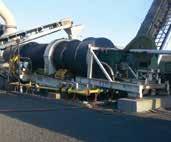



The Bissen name has been synony mous with asphalt paving on Wiscon sin’s Door Peninsula since 1968. After investing in a new paver from Weiler and a new grader from Case, equipped with Leica’s 2D machine control, Bissen Asphalt sees how modern technology can work alongside tradi tion to take the company to the next level.
Door Peninsula is a slender limestone pen insula jutting into Lake Michigan from eastern Wisconsin. A popular tourist destination, the peninsula is known for its rocky cliffs, beach es, natural wetlands, conifer forests, and apple and cherry orchards.
Since 1968, the Bissen name has been syn onymous with asphalt paving across the pen insula—first as Bissen Blacktop under the leadership of Bissen’s father and then as Bissen Asphalt under the leadership of current Presi dent Rick Bissen.
When his father retired at the end of the 2004 paving season, Bissen renamed the business before striking out on his own for the 2005 season. However, he worked along side his father since he was 14 years old. “I started off as an operator and worked my way up to estimating, scheduling and man aging,” Bissen said.
Remaining in the asphalt industry even after his father retired was a no-brainer for Bissen. “I’m not the type of person who could work inside a factory, doing the same job in the same place every single day,” Bis sen said. “I enjoy the new challenges we have to deal with on a daily basis.”
Today, the company employs 20 peo ple during the paving season and 95% of its work is asphalt-related. “We do anything from a patching job to a shopping mall park ing lot,” Bissen said, adding that around 80% of Bissen’s book of work is driveways. They pave an average of four or five driveways per day throughout the season, which lasts from May to November.
Bissen Asphalt, headquartered in the pen insula’s most populous town, Sturgeon Bay, paves all the way to the northern edge of the peninsula, roughly 60 miles from Sturgeon Bay, and about that far south as well. Since Bis
sen Asphalt doesn’t usually do roadwork, most of its jobs only last a few days, Bissen said, which makes it an ideal job for someone like him who likes to face new challenges.
This is a sentiment shared by Bissen Equip ment Operator Kirk Wilke. “I like that no two jobs are the same and that you have a chance to move around the peninsula a bit more,” Wil ke said. “One day, you’re paving a driveway on one part of the peninsula and the next you’re paving a tennis court on the other side. You’re surrounded by different scenery every day.”
And when the scenery is pretty enough to attract millions of tourists each year, that can be quite the bonus for Bissen and its employ ees. Tourism on the peninsula has also helped Bissen Asphalt stay busy. “We’re located in a popular vacation destination and there’s plen ty of new construction in the area,” Bissen said. “The workload up here is comfortable.”
However, he added, the company is still very much a local business. “The work we do for lo cals up here is what keeps us going.” It isn’t un common for Bissen to revisit jobs it paved de cades ago. For example, Bissen paved the orig inal cart paths at Horseshoe Bay Golf Course more than 20 years ago and just recently per formed some repair work on the same paths where tree roots had infiltrated the asphalt.
“That was one tough job,” Bissen recalled, add ing that none of the paths were straight pulls.
Having such a longstanding history in the peninsula, Bissen enjoys being able to drive around the peninsula and recall jobs he’s worked on. “We’ve done our fair share of work around the peninsula,” he said.
Over the years, Bissen Asphalt has built a legacy across the peninsula. However, after investing in several new pieces of equipment, Bissen Asphalt is experiencing how modern technology can work alongside tradition to take the company to the next level.

Although the business is still very much the same as it was in 2004, Bissen said the most significant change has occurred as a result of upgraded equipment and new technology. For example, they had been using an old Blaw Knox paver before upgrading to a Weiler pav er in 2016.
“The Blaw Knox had been a good paver for us at the time, but the technology has im proved so much throughout the years,” Bissen said. Upgrading its paver allowed Bissen to re alize the benefits of more modern technology. “It’s increased our productivity dramatically.”
Bissen Asphalt’s area of operation is hilly, and many of the driveways the company paves are steep. Bissen estimates that roughly 15% of
the driveways it paves are steeper inclines. “We aren’t paving steep driveways all the time, but we face them frequently enough that they give us a major headache,” Bissen said. “The traction and controls we have on our Weiler paver has helped tremendously in those situations.”
One of the first times Bissen’s crew was paving with the Weiler on a steep driveway, they placed bets to see if the paver would be able to make it up. “Our old Blaw Knox defi nitely would have spun out,” Bissen said. The whole crew bet the Weiler wouldn’t make it up the hill and were ready to use a frontend loader to help the paver make it up the hill, as they’d often done with their old paver. They filled up the hopper of the new Weiler paver and held their breath.
“We could barely believe it when it made it up the hill without any issues,” Bissen said. “It opened up our eyes to how modern equipment could help us get the job done.”
A more recent upgrade is the company’s purchase of an 836C motor grader from Case Construction Equipment (Case CE), Racine, Wisconsin, with 2D machine con trol designed by Leica Geosystems, part of Hexagon, headquartered in Heerbrugg, Switzerland, in 2021.
Bissen had previously been using two smaller graders that didn’t have the pow er or the weight to carry material up steep driveways while maintaining traction. Fur thermore, a mid-size grader would be small enough for the company’s driveway jobs, which are usually single 10-foot passes and often have trees overhead, while also being large enough for Bissen Asphalt’s parking lot jobs. “We needed something bigger to get our jobs done, but the road style graders were too big for what we do.”
A game-changing feature on its Case CE grader has been the 2D machine control sys tem from Leica that Wilke uses to set slope prior to paving.
“With the Leica system, you can set your slope, run one side manually, and the ma chine will lock the other side,” Bissen said, adding the system has enabled them to get driveway jobs done in one-third less time than before.
The system has also helped achieve slope on the handful of tennis court jobs Bis sen paves each year, with Wilke estimating it saves him an hour or two on each one of those jobs.
“Being able to dial in the slope you want and set the grade automatically is a major im provement over the old way of guessing and
relying on a slope meter,” Wilke said. “It was a no-brainer that has saved so much time, sim ply by letting the machine do the work.”
For example, in a video Case CE put to gether profiling Bissen Asphalt’s experience with its machine, Bissen was able to prepare the site to pave a parking lot for a local green house much more efficiently. Wilke dialed in the slope he needed on the Leica system for the first pass and was able to match each pre vious pass as he made his way to the other end of the parking lot area. “If you calculated your slope right, you’ll be right on the money when you reach the other end,” he said.
Wilke also appreciates how the system has made him more comfortable while he works. “I don’t have to be constantly turning my head,” he said. “I can focus on one side, knowing the Leica system has the other side covered. Now, I just glance over every once in a while to make sure I have enough ma terial rolling out the other side rather than constantly looking back and forth to the dif ferent blades. It’s definitely more comfort able for the operator.”
The ease of learning the 2D system was also a benefit. An expert from Case came out and trained Wilke on the 2D system and has been available to answer Wilke’s questions as they arise. Ultimately, Wilke said it took one week to get used to the new system, but that it is a very easy system to operate.
Now that he’s used to the Case grader and its 2D system, Bissen joked that Wilke doesn’t like using the company’s other grad ers anymore. “We tried to get him out in one of them for a small job today, but he likes the new one too much.”
Having seen the benefits of modern equipment and technology first hand, Bis sen says the company is continuing to look for ways to be more efficient. “Nothing in this world seems to be slowing down. In fact, everything seems to be moving faster and faster,” he said. “There’s more construc tion up here and we’re just trying to keep up with the pace of the world.”
When Bissen’s existing lineup of older Bomag, Cat and Hamm rollers reach the end of their useful lives, he hopes to in vest in new ones with intelligent compac tion capabilities.
“We’re going to keep looking at what will help us improve and become more efficient so that we can do what we’ve been doing faster and with top quality,” Bissen said.
AsphaltPro magazine joined forces with hall-of-fame paving consultant John S. Ball III of Top Quality
Paving & Training to bring you the newest online training resource for your crew: Asphalt Paving 101.
The course is available on any device, anytime, anywhere to train your entire crew. Your single subscription to the best curriculum of all time gives you access to train all of your employees, each time you bring in a new hire.
In this course, your crew will learn:
• How to stay safe on the job site
• How to build a takeoff ramp
• How to determine fluff factor
• How to determine yield
• How to prep for real paving in the real world

• How to maintain equipment the right way
• Job responsibilities for each paving crew member
• and so much more…

We’re large enough to understand that every producer’s needs are different. Small enough to personally answer your call, listen to your needs and help with sound solutions, like customizing just the right asphalt plant to meet your specific production goals, or troubleshooting when surprises happen. Tell us how we can help.


In 1981, Clarence and Sandy Brasier formed Brasier Asphalt, and their daughter, Jeani Brasier, worked for the business starting with an office position in 1994. She would spend summers trav elling with her dad on sales calls and projects. “These road trips taught me no matter what we did, we were in the business of serv ing people; our individual customers, everyone who makes up the agencies they serve, the public using the roads, our employees, their families, and even the communities we work in. This has given me an incredible point of view throughout my life and been a perspec tive that gave me an advantage in all aspects of life.”
By 1997, she began a part time sales role alongside her dad while studying marketing at University of Colorado. “After graduating from college, I continued to work in sales and marketing for Brasier As phalt until taking a marketing position with KOCH Industries in their Pavement Solutions and Performance Roads divisions in 2002. Then I moved to Vance Brothers in new product business development. I re turned to Brasier Asphalt until 2008 when I took an active owner role in an agricultural commodity trading business with my husband John Ringkob. I worked directly with business owners and leaders in 2018 and have since grown StoryBuilt Growth Strategy and Marketing to help owners and leaders in the construction industry identify the best strategy to grow their businesses and execute to get results.”
Her career started in the family business but has included achieving a marketing degree and developing her own company within the con struction industry with StoryBuilt Growth Strategy and Marketing. Despite a busy workload and family life, Ringkob took time out to share her story with readers and encourage other women of asphalt.

AsphaltPro: What experience from working in the Brasier As phalt office environment or field environment would you share with a woman entering the industry today to encourage her?
Jeani Ringkob: I started cleaning the office, filing and being an assistant to our office manager whenever I had spare time. It was important to start here because it gave me a behind the scenes look. We all love the thrill and excitement of the actual project. Yet with out that behind-the-scenes support team, there would be no man aged finances, on-time payroll, bills getting paid, permits getting filed—all the things that are vital but don’t get recognized at the end of the day. My mom was a meticulous bookkeeper and very driv en to ensure we were financially sound. In an industry that requires bold risk takers to build businesses, this was a secret weapon to en
sure we succeeded even when things fluctuated or the unexpected happened.
My dad was also great about giving my mom and the office team credit. This was good for me and the rest of the team to hear. As women, we can get anxious to prove ourselves. No matter the role we play, we need to embrace our characteristic of nurturing and ap preciating those that make each piece possible.
In the field, my biggest women mentoring moments came later. After my dad died unexpectedly in 2000, it was all hands-on deck. My mom had been a dental hygienist who also did the books for the business and kept the home front running while my dad traveled extensively. She already carried a lot of the load. Yet from that very first project after he passed away, she’s almost always been on site for the last 22 years. She learned to operate the steel wheel and we had a tough time getting her off. She didn’t know it at the time, but she was showing me what it meant to lead during a crisis. She was dev astated and heartbroken, yet she put herself out there. In front of cus tomers, partners and our whole team. She saved our company during those difficult years.
Women are your best tool in times of crisis and businesses will face crisis. Having multiple women in key leadership roles is scientifically proven to help teams make better decisions but I know with certainty we can be the glue when push comes to shove.
AsphaltPro: StoryBuilt Marketing began in 2017. Could you share with the audience how marketing your business to the asphalt market place specifically changed once COVID-19 interrupted workflows in 2020? And how did you address it?
Jeani Ringkob: Like a lot of parents and especially moms, I found myself in an overwhelming situation that felt impossible. When COVID-19 hit, our kids were ages 10, 9 and 5. I had to get ruthless about the tasks on my schedule. It forced me to take some of the same strategic models and frameworks I use with clients to determine what this incredible hurdle could look like if I made it into an opportunity and then executed a plan to ensure I hit my objective.
AsphaltPro: How many employees did you start out with when opening for business in 2017 and how many employees does Story Built Marketing have now?
Jeani Ringkob: I run my business to be super flexible to meet my client’s needs. I started with just me and now I work closely with a team of independent subcontractors. This lets me stay focused on my area of genius, which is strategy, finding opportunities and turning them into execution plans that get organizations profits, growth and results. Not being committed to a full team of specific skill sets allows me the freedom to focus on what is best for my client and then build the team to meet their unique execution needs.
As my project load has increased, I’ve been reaching out and tap ping into specific skill sets in the industry to support my clients’ needs. Many of these are women. It is a great fit for many women who are looking to stay involved in the industry, continue to work on exciting projects and develop the lifestyle they want. Many of them are moms. I’m always looking for people with skills in the areas of design, re search, copywriting and project management. Women with skills in these areas have an incredible opportunity to bring value and create solid careers in asphalt.
AsphaltPro: How can women in the industry encourage not just other women, but contractors/producers in general, to share their good news and promote themselves more widely?
Jeani Ringkob: We need to start with ourselves first. One of the things we miss early on is deciding what success looks like to us as in dividuals. Both professionally and personally and then being very in tentional about setting goals, building what I call an “advisory board” of mentor, mentees and peers. Know what you want! During this pro cess it is also important to acknowledge that there are seasons in life and careers. Be willing to adjust the course when things feel strained or off track.
Next, we can start looking at our environment and how we want to influence and shape it. Whether that looks like encouraging other women in the industry or the teams and people in our in dustry at large.
As for encouraging other women, what I find moves the needle most and be the most rewarding is small groups and one-on-one relationships. Find small groups of women, either through coach ing or mastermind groups of women with comparable goals and life situations. These are wonderful places to generate ideas, share knowledge and have safe places to get feedback on struggles. Just make sure it is filled with positive characters. Keep in mind these groups do not necessarily need to be in the asphalt industry. Some times I like having fresh perspectives that come with getting out side the context of my every day.
Finding a mentor and/or mentee within the industry can build an incredibly rewarding relationship. I think Women of Asphalt has done an incredible job with their mentorship program; it has certainly fostered great relationships for me.
The influences around encouraging and supporting women in the industry are varied. Some cultures and situations make this effortless and some are more challenging. We need to always as sess which situation we are in or want to influence. There are two terrific books I would recommend here, and they are of contrast ing perspectives. “Lean In” by Sheryl Sandberg, but even more so I would suggest reading the opposing perspective, “Lean Out” by Marissa Orr.
There are wonderful things about our industry but like any in dustry there are some ugly things still hidden in the closet. I have had the opportunity to work in both situations. There are times we need to lean in and elevate a great situation and group of people and there are times leaning in does a disservice to the progress that needs to be made. We do not need to lean into cultures, teams or situations that are broken. Stepping back and saying you will not support a broken system speaks volumes and can make bigger im pacts, especially when you take into perspective what you want for your career and life.
AsphaltPro: What do you think is the most important skill you have brought to your position in the construction marketplace?
Jeani Ringkob: The fact that I have spent time out of the indus try and that I am a fervent consumer of knowledge around growth strategy and business development lets me bring knowledge and perspective that our industry is hungry for.
AsphaltPro: Could you tell us about some changes you have seen take place in the asphalt pavement maintenance culture since the time you worked in your family's company?
Jeani Ringkob: Two things stick out to me.
1. The Women of Asphalt is such a great organization. They are just starting to see the potential they have to make a great impact. It takes an army to pull something like that off, but they have bril liant, motivated members and I am so grateful for it. I joke about how I needed this when I was out peddling asphalt and felt like the only woman in the world.
2. I still get dumbstruck by just how many and how diverse the women in our industry are on a regular basis. Sometimes I won der if there really were more women out there and I just did not realize it or if social media and technology has made it more ap parent and easier to connect. It is both.
AsphaltPro: Let’s talk about perceptions of our industry. It’s a fact that asphalt pavement maintenance and preservation can be hot and dusty. How do you respond to people who say it’s a “dirty job?”
Jeani Ringkob: Sometimes the dirtiest jobs are the most rewarding. This is the work that builds the backbone of our country. The best eve nings of my life came after I looked back at miles of blacktop that I was part of laying down and watching the public drive safely home on. Get outside, get dirty and build something that will last. That is some of the most rewarding work we can do as people for other people.
AsphaltPro: What do you think is an incorrect perception that we, as an industry, can re-educate young people about to encourage more women to consider a career in the asphalt industry?


Jeani Ringkob: The generations entering the workforce now care about the impact their work has and I really admire them for this. It is a better way to approach life when you know you will spend 20-40% working. I know without a doubt this is one of the best in dustries to tangibly connect your work to outcomes and impacts. Whether it is road safety, environmental impacts, innovation, creat ing jobs, building infrastructure and so on. As an industry, we need to be better at two things: understanding what the next generation is looking for in careers and aligning ourselves with that; and inviting a great workforce into the story of the asphalt industry. We have not done an excellent job of telling our story in a way that gets people
excited to come alongside us. This means there is an opportunity to nail that story and get it out there.
AsphaltPro: What is the most challenging aspect for you of being in the asphalt marketplace?
Jeani Ringkob: For an industry that has always been innovative in products and solutions in the field we have some pretty deep ruts we like to stay in when it comes to running our businesses, looking at profitability, building cultures and so on. I have seen some good indicators that this is changing but I still hear people say, “because we always have,” “that’s how it’s done,” “we’re not X, Y or Z type of industry.” If we want better results, we must look for better solutions and new opportunities to grow, try new things and break the old mold. Our industry is primed to take off here.
AsphaltPro: What is the most rewarding aspect for you of being in the asphalt marketplace?
Jeani Ringkob: It is hard to top standing on a brand-new blacktop surface and know you had something to do with building that piece of road, but it still comes in second to the people. I just love people. I have been in different industries, and I have never felt more part of something than when I walk back into a room of asphalt peo ple. It can be hard to pinpoint but I have witnessed contractors help other contractors get started in their own market, agency owners and contractors elevate one another and grind through the toughest of times together, suppliers become vital partners to emerging con tractors and providers...
People are attracted here and then more importantly, they stay here (or come back in my case) because people are helping people succeed here. Asphalt people can compete one day and collaborate the next. It is a beautiful place to make an impact.
AsphaltPro: Will you tell us about a person who served as a men tor for you and share a piece of advice from this person that you would like to share with other women in the industry?
Jeani Ringkob: There are so many, it is hard to pick one. Mike O’Leary rises to the surface for me.
Mike has been part of my life for as long as I can remember. At every point in my career and even as I lost my father and became a mother, he was a lighthouse. Sometimes far away but always on a solid surface I could find and center myself on. When I think about the times my career was really synchronized and I was hitting my stride, I realized he was more present, and I was open to his support, advice, and confi dence that I could do it. One thing I love about our industry is not the women mentors I have had, and I have had a few great ones in this in dustry (my mom and Ashlye Batson to name a few) but there are some men that will really come alongside and support women here.
Mike modeled this more than told me this, but he showed me the importance of relationships. I am an introvert by nature and need time alone to recharge even though I love to connect with people. Watching and seeing the power of how he builds relation ships is inspiring and opened my eyes to how relationships can move mountains.



IIncreasingly, industry experts and regulatory agencies worldwide are urging or mandating the use of high-RAP mixes with the intent to maximize the recycling of reclaimed asphalt pavement (RAP) and minimize the need for virgin liquid asphalt cement (AC) and fresh aggregates.

It is well recognized that for high-RAP mixes with greater than 25 to 35% RAP, a rejuvenator or recycling agent is frequently
needed. An ideal recycling agent restores the functional properties of the aged binder, aids workability and compactability of the asphalt mix, delivers the required roadway perfor mance and durability, and reduces the need for virgin binder.
ReLIXER, a proprietary blend of biobased oils, marketed by Sripath Technol ogies®, is engineered to incorporate all the characteristics of an ideal recycling agent. It has been vetted, tested, and approved/listed by authorities and paving contractors around
the world. Recently, high-RAP mixes dosed with ReLIXER were used on roadway trials in Queensland, Australia. One trial was con ducted in Brisbane City and the other in the City of Gold Coast.
In preparation and support for these trials, ReLIXER was extensively evaluated and test ed by Associate Professor Filippo Giustozzi and his team at the Royal Melbourne Institute of Technology (RMIT) in Melbourne.
“ReLIXER is very effective in restoring the functional properties of aged bitumen
in mixes using recycled asphalt pavement (RAP) material,” Giustozzi said. “It is high ly dosage efficient and provides long-term rejuvenation for sustainable infrastructure projects.”
Fulton Hogan, a leading asphalt pave ment contractor in Australia, partnered with the Brisbane City Council in Queensland to evaluate the incorporation of high levels of RAP in paving mixes. A successful roadway trial was completed in June 2022, where a high-RAP mix was dosed with ReLIXER to pave a 0.7-lane-kilometer stretch of the Old Cleveland Road in Brisbane.
A trial mix based on a multi-grade bind er, M1000, contained 40% RAP, 3.1% bind er, ReLIXER and aggregates. It was paved for comparison against a standard mix of M1000 binder with 15% RAP.
“The high-RAP trial mix was easy to man ufacture at our plant and easy to pave and
compact,” said Laszlo Petho, pavements manager at Fulton Hogan.
Chris Lange, technical manager at Fulton Hogan, stated, “We have been very interest ed in green technologies, such as incorpo rating higher RAP content into mixes. We believe that this trial has provided us with a viable path forward.”
The Marshall properties of a M1000 with 40% RAP and ReLIXER are summarized in Table 1. Also included in this table are the binder properties of the no-RAP mix, the standard mix and the trial mix. A dosage level of 3.24% ReLIXER, as percent of total binder weight, was used for the trial mix to achieve properties comparable to the stan dard mix. The CTIndex value for the trial mix was determined to be 242 compared to a val ue of 182 for the standard mix.

1. Data from Brisbane Trial
The Brisbane City trial demonstrated that ReLIXER is an effective recycling agent for the city. It rapidly penetrated RAP particles and rejuvenated the aged binder. It further helped reduce the amount of virgin bitumen and aggregates needed; thus, reducing the overall cost of the mix.
“We really enjoyed working with Bris bane City Council, Fulton Hogan and RMIT in preparation for and during this trial,” stated Ravi Rajagopalan, general manag er at Sripath Asia-Pac. “It was an extreme ly well-organized trial, thanks to the Fulton Hogan team.”
The Brisbane team had an idea the tri al would be a success. In November 2021, the Australian Flexible Pavement Associ ation (AfPA) had organized a webinar on “High RAP Asphalt Mixes & the Role of


Rejuvenators,” where Krishna Srinivasan, president of Sripath Technologies, one of the presenters, talked about Sripath’s re juvenator. As an extension of the webinar, AfPA organized a trial in Queensland to demonstrate the effectiveness of the three recycling agents featured in the webinar. The entire project was managed by Ful ton Hogan in coordination with the City of Gold Coast.
“As part of the initiative to reduce car bon footprint and create a more sustain able future, AfPA, in coordination with Fulton Hogan, recently organized a na tional high-RAP rejuvenation trial, which consisted of paving one control mix and three trial mixes, each with a different re juvenator, on a stretch of Hymix Road in Gaven, City of Gold Coast,” stated Anna D’Angelo, executive director, Technology & Leadership at AfPA.
The control mix for the trial was an AC14H Mix, based on an A15E poly mer-modified bitumen (PMB) binder. One of the trial mixes consisted of the A15E binder mixed with 40% RAP and dosed
with ReLIXER. The properties of the con trol mix and the trial mix are summarized in Table 2. A dosage level of 4.9% ReLIX ER was selected for the trial mix to achieve properties comparable to the control mix.

The City of Gold Coast trial demonstrat ed the effectiveness of Sripath’s ReLIXER as a viable recycling agent for high-RAP mixes in Australia.
“We greatly appreciate this opportuni ty to demonstrate the effectiveness of our recycling agent ReLIXER,” stated Deepak Madan, chief marketing & business devel opment officer at Sripath. “Our thanks to the Fulton Hogan team and AfPA for in cluding ReLIXER in this national trial and to the City of Gold Coast for supporting the trial.”
The team included additional experts devoted to environmental excellence.
Sripath Asia-Pac Pty Ltd, an affiliate of Sripath Technologies LLC, was estab lished in Melbourne in early 2021, to mar ket Sripath products to the paving indus tries in Australia, New Zealand, and the Asia-Pacific region.

“Sripath Technologies and Sripath Asia-Pac became members of AfPA soon after they set up an office in Melbourne,” D’Angelo said. “Sripath has already be come an integral part of our paving com munity in Australia.”
Sripath’s recycling agent ReLIXER is an environmentally friendly product, de signed to be highly efficient at low dosing levels, non-hazardous, safe to handle and easy to incorporate in a mix plant.
Rajagopalan added: “ReLIXER helps reduce the carbon footprint and green house gas emissions. In high-RAP mix es, it helps reduce the need for virgin bi tumen and lowers the overall cost of the mix. ReLIXER has been tested, vetted and adopted by experts from around the world, now also in Australia.”
Melissa Introne, owner of Introne Communications, is a freelance writer of articles and overview papers in the paving, roofing, building envelope and other industries.
“THE HIGH-RAP TRIAL MIX WAS EASY TO MANUFACTURE AT OUR PLANT AND EASY TO PAVE AND COMPACT.” —LASZLO PETHO



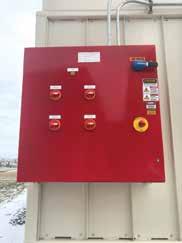

In the future, burner controls will be inte grated into Libra Drum. Instead of having a separate tabletop control system sitting on the desk, the plant operator will have burner con trols and dashboards available in Libra Drum on the PC and up on the screen so the plant operators can monitor everything that is going on in the plant in one place.
This allows owners and operators to cal ibrate the burners and make comparisons between the type of fuel being burned and the most efficient flow rate for that burner, as well as helping them to make decisions for upgrades.
One accident can cost asphalt producers big bucks, or worse—potentially someone’s life. For example, once the silo gates open for load out, tons of scalding material drops in a mat ter of seconds. The Silo Safety System in Libra Drum can help ensure operators do not make costly or potentially life-threatening mistakes here. The Silo Safety System features infrared sensors to enable each silo, if and only if, the truck is in the proper position. As the truck pulls through to the loadout station, it will break the infrared sensor beam to enable the silo to be opened.
In Libra Drum, clarity for newer plant operators comes in the form of dynamic, color-coded graphics that provide at-a-glance status pertaining to valve changes, material flow, tank lev els, temperatures, interlocks and alarm conditions that require the operator’s attention. Image courtesy of Command Alkon
BY KERRY DOUGANPPrice increases and supply chain issues are putting more pressure on the ability to carry out projects. Inflation has undercut funding from the Infrastructure Investment and Jobs Act (IIJA), and resources to complete work are scarce. Most companies are paying employees more to adjust to inflation, on top of offering competitive wages to attract them to the indus try. Not to mention, if an operation must pur chase new equipment, the cost of the equip ment can be up to 30-40% higher than it was a few months ago.
The combination of climbing energy prices, rising cost pressure and the skilled labor short age is pushing producers to implement digi tal tools that streamline operations and reduce costs to maintain business continuity, stay competitive and be profitable.
Every plant operator understands how one disruption can significantly impact the entire
organization’s financial health. Libra Drum monitors motor currents and plant param eters to aid optimization of efficiencies and allow predictive maintenance before failures take down the plant. To meet the need, plant controls are a must.
Libra Drum is designed to be easy to use, helping to alleviate some of the onboarding struggles producers might encounter with new, inexperienced plant operators. Every in dustry is struggling to recruit new workers, and businesses across the construction in dustry are feeling the pressure from the short age of human resources as well as the cost per worker. Automating operations allows as phalt plants to operate with fewer employees while still getting loads out the door.
The user can design custom software switches, create reports, and adapt to the cur rent and future plant control requirements. A fully graphic interface monitors complex drum control operations, increases produc tion and accuracy, and integrates with over head loadout.

Automating processes ultimately gets more loads out the door and more cash flowing to a producer’s pockets. Site-automation tech nologies such as auto identification technol ogy, driver kiosks, mobile loader application, traffic signals and remote driver displays can enhance asphalt operations by connecting dispatch processes with the back office, sales personnel and management staff. When data flows seamlessly across the operation, man agement is empowered to make better deci sions and manual processes are eliminated, giving operational personnel the ability to do more with the staff available and the freedom to focus on other important tasks.
When working entirely around outdated in formation, producers can make mistakes that dramatically affect the profitability of a job but when working from consistent, accurate data, guesswork and poor decision-making are greatly reduced. In today’s unique econom ic environment, producers are realizing that sharing real-time data is crucial for success and that they must add real-time data to the management mix to improve production effi ciency and productivity while also monitoring power consumption and costs.
Kerry Dougan serves as the market manager for the Bulk Materials Segment at Command Alkon.

When you feel passionate about a product or service, you’ll use it wherever you go. That’s what Richard Fuist did after he joined Jon M Hall, a site utility contractor in central Flori da, as a fleet operations manager. After set tling into his new office, Fuist’s first call was to get his 500-person crew, 220 pieces of con struction equipment, and 170 on-road assets equipped with construction fleet management software. Once he got the green light, Fuist next turned to helping Jon M Hall save money in their daily operations.
For Fuist, the company culture shift started with educating his co-workers. He explained that most workers don’t realize how much it costs to leave the air conditioning running in a vehicle while waiting for a haul truck to arrive or while going in to get lunch.
Industry research indicates that off-road as sets average an hour of excessive idle per ma chine per day, at a cost of roughly $50 per hour (including fuel, services and depreciation). Aggregate that across a fleet and the savings potential is staggering.
Fuist knew this first-hand after using Fleet watcher Material Management Solution (MMS) by Earthwave Technologies, Indianap olis, at a previous company to curb idling.
“My first year, I reduced the idle time 23,000 hours total in equipment, and that equated to about just over $1 million in cut costs.” Nearly $300,000 of that amount was in immediate fuel savings, while another chunk came in the form of lowering equipment operating costs.

“By reducing idle time, you slow down de preciation, you slow down accelerated hour
accumulation, which allows you to keep the equipment longer in your fleet making money. Your operating expenses will be reduced an nually, from fuel savings, extending PM sched ules, diesel particulate filter changes, major re pairs and so on,” Fuist explained.
FleetWatcher’s Escalating Idle Alerts proac tively informs managers via text or email when equipment has been idling for too long, based on a pre-set threshold, allowing personnel to take immediate corrective action.
FleetWatcher monitors and alerts managers with a text or email when a pre-set thresh old has been reached. Users set an “excessive idle alert” parameter into a three-tier thresh old. Fuist sets his threshold every 15 minutes. When that first threshold has been reached, an alert is sent via email or text every 5 minutes to the foreman.
If the unit continues to idle and the second threshold is reached, a second threshold alert is sent to the foreman, superintendent, maybe also a project manager or equipment manager every 5 minutes.
If the alerts haven’t been dealt with reach ing the 45-minute window, the third thresh old alert is sent to the general superinten dent and the owner of the company—a guy most folks don’t want to be advised of this sort of situation.
The parameters and alerting structure are completely customizable by the user.
Fuist stated loaders are the worst offenders in idle time in the heavy construction business. For example, he told the story of a 5-year-old Cat 938 loader he’d had before implementing
FleetWatcher. While at the Cat dealership for repairs, Fuist had them download the ECM data and report back. What he found was out of 8,849 total time hours on the machine, 5,340 of those hours were idle time.
“That means 60% of the machine’s life was strictly idling,” Fuist said. “Imagine the waste of operating costs with that kind of idle time, because you certainly aren’t making money with that machine sitting at idle 60% of its life.”
“If idle time could be reduced to 25%, the life of this machine could be extended for an other 4-6 years, saving replacement cost.”
Escalating Idle Alert is just one data col lection feature of the FleetWatcher telematics platform. Data can be integrated with other business systems such as accounting, estimat ing and job cost systems, bringing everything together for a more comprehensive view. Fleet Watcher tracks multiple data points includ ing cycle times, productivity and downtime, equipment use and underuse, exact location of each piece of equipment, project status, bud gets, shop costs, rental expenses, and trends and behaviors.
In his quest to educate his co-workers, Fuist has leveraged data at every turn to help Jon M Hall make informed decisions. “I send out equipment utilization reports daily. We always try to use this information to better utilize our company equipment.”
This daily report, pulled with FleetWatcher, allows Fuist to break down all company assets by category, such as all excavators, dumps or loaders, to see companywide use.
This information has been useful to refer ence whenever the company has considered renting another piece of equipment for a job, Fuist explained. Before deciding to rent a ma chine, they can check their reports to ensure they’re using their own equipment to its full potential.
By looking at utilization reports, Fuist and his team can not only determine if they need to rent an additional piece of equipment, but also if they can move equipment between job sites as well. “It’s about awareness. It brings awareness to the company on our utilization. It brings awareness to the jobs on how they are doing. The upper management are totally onboard with the reports, too. They see what’s going on companywide and if they have any questions, they can call the superintendent or foreman directly.”
Evan Triggs is the vice president of Earthwave Technologies. For more information, contact him at evan.triggs@ earthwavetech.com.





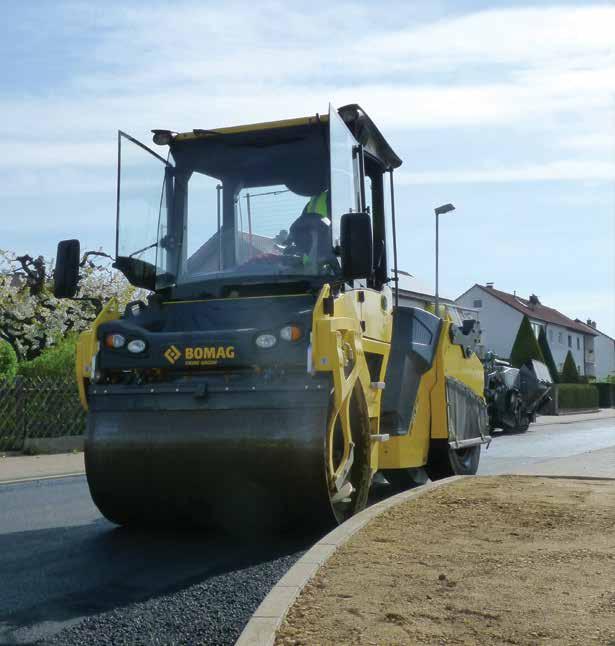
Find the education your crew needs with our partners who support the asphalt industry.
How to prevent shoving of the mat, and other best practices, next season
BY SANDY LENDERTThere are few in the construction industry who would refute the fact we have a collective need to recruit new workers to our trades. When bringing in new workers who may or may not be familiar with heavy equipment operation or the mechanics of pavement system builds, our next hurdle to overcome is teaching these people a new skill set, training them on the finer points of building a pavement system that will last for decades.
From original equipment manufacturers (OEMs) to trade associa tions to consultants in industry, we are fortunate to have experts who not only know how to perform the tasks necessary for these builds, but also know how to teach and train. Some of these consultants and professors know how to train others to become trainers. We have within the asphalt production and paving industry a host of knowl edge for contractors to tap into.
Now you need to know where to find the specific knowledge your team members need for your specialized services. Turn to AsphaltPro Magazine’s advertising partners for help. Not only do we highlight the paving, production, testing and other asphalt-related schools these partners offer, but our staff also seeks out information on which ven dors provide individualized or one-on-one training for customers to share with you. It’s not every OEM who can afford to build an entire facility like the ones at the Astec, Gencor, Wirtgen, and similar cam puses. Those campuses are listed on page 52 to make them easier for you to look up online.
Keep in mind, there are a range of training providers in the asphalt industry, beyond those listed in this year’s training directory. What we’ve assembled for you is a listing of those who are committed to the AsphaltPro audience. Those entities who support our training efforts will also be listed, with easily clickable links, at the “Partner Courses” link under the “Training” tab on TheAsphaltPro.com.
We’ve also taken a moment with this year’s training directory to focus on a specific aspect of the paving train: compaction. One of
This distributor truck driver was unwilling to change the settings on tack rate or spray bar height to modify the tack coverage on this pavement. The result is a series of stripes where the “glue” isn’t helping the new mat adhere properly to the existing pavement. This is one area where shoving can occur because of poor adherence between layers. Company information is withheld.

the most important aspects of building a long-lasting pavement is to achieve the mix design’s target density. That’s easier to do when you have experienced roller operators using well-maintained equip ment outfitted with the latest technology, which, of course, the oper ators have been taught to use most efficiently. On page 50, you’ll find a back-to-basics article from Top Quality Paving & Training’s John Ball, which you can copy and share with your new (or veteran) roll er operators to assist in their understanding of reversing smoothly to complete a pass without bowing, breaking or bubbling the mat.
But let’s take a moment right here to consider another important facet of the paving operation: reducing shoving. While the article on how to reverse the roller with smooth, gentle perfection will assist in keeping the breakdown roller operator from shoving the bow of ma terial, let’s look at other steps you could be teaching your paving crew
to take to prevent material shoving during construction or to prevent delamination between layers after construction.


Do you include your milling crew in seasonal training? Does your distributor truck driver understand the importance of setting spray bar height and tack rate, and achieving appropriate coverage for the perfect bond between an existing pavement and new mat?
If you’re training your crew for successful projects, then your dump man is watching those new haul truck drivers like a hawk, guiding them for least chances of tracking tack and best chances of stopping
Did you know you can get quick tips delivered to your inbox once a week for training crewmembers at the lab, plant, mechanic’s shed or paving site? AsphaltPro Magazine prepares a Monday Morning Toolbox Tip on a range of topics and delivers this for free to anyone in the industry who wants it. Sign up here: https://theasphaltpro.com/upgrade-dailytoolbox-talks/
safely “near” the push rollers. This will allow your well-taught paver operator to nudge into position for charging the hopper and moving forward. Whether you’re paving uphill or on a flat surface, your pav er operator needs to know why he’s moving at a slow and steady pace, rather than gunning the engine to hurry through each truckload as if racing the plant.
AsphaltPro Magazine teamed up with industry consultant John Ball the Third to prepare the online paving course Asphalt Paving 101. This back-to-basics course is available to everyone on your crew with the purchase of only one subscription. Take the online course as many times as you need to with as many crewmembers as you need to for life with that one (1) purchase. Visit the “Training” tab at TheAsphaltPro.com.
With all the crewmembers, from cold planer to finish roller oper ator to all the quality control members in between, trained to under stand the elements of a long-lasting asphalt pavement and trained in the skills of the trade, we build a workforce to be reckoned with. Teaching the skills of the construction trade(s) to the newcomers to the industry is a noble and worthy goal that both construction em ployers and their vendors are working toward. We’re in this together and, as seen on the next few pages, committed to supporting one an other in sharing the messaging.
GGetting proper compaction on the project is the key to a long-last ing asphalt pavement. While you probably won’t put a brand-new worker on the breakdown roller and expect everything to go well, cross-training employees is vital to a crew’s success. You want to teach all members of the compaction train the best practices of rolling for a bonus-worthy mat. Reversing is a skill to spend some time on.
Let’s use the image on this page for reference.
This picture shows an excellent roller operator using best practic es on a second pass with the breakdown roller. I want to call your at tention to her position in the cab, seated so she can see well moving in both forward and reverse.
But look at the position of the roller itself. You can see that she’s rolled toward the paver, coming onto the hottest part of the mat at an angle. She’s turned gently as she’s come to a stop for revers ing. While you can’t see it in this picture, I can tell you she has also turned off the vibe as she’s slowed to a stop so she’s not pounding the mat and breaking the aggregate in the lift. This is the proper way to roll a pass.
Let’s break it down.
As you roll toward the paver, watch your intelligent compaction (IC) screen to see what temperature the mat is. While the water on your drum is not a problem as you’re rolling toward the hottest part of the mat, squeezing the bow of material and water under the hot drum, it could present a problem as you reverse and roll away from a mat that’s 300-degrees or higher. The boiling water, bubbling up as you roll away, can cause a ribboning effect on the new mat in an extremely hot area. Watch your temperatures and adhere to the rolling patterns your quality control team has set for the mix you’re working with.
This roller operator shows the proper way to approach the paver and prepare to reverse. Photo courtesy of John Ball
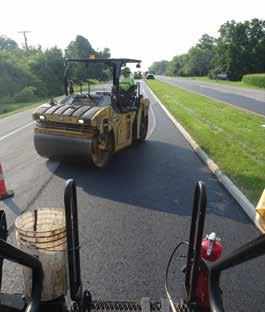
While you will roll in a straight line toward the paver, you will turn gently to curve away from the straight line before coming to a stop. You don’t want to shove the mat with a hard stop that’s paral lel to the screed. You don’t want to create a dip in the mat where the roller drum has stopped and settled before reversing.
When going into the slight and gentle turn, turn off the vibration to prevent overcompacting while slowed, stopped and reversing. You can turn the vibe back on as you get back up to speed.
This maneuver isn’t as important on the cold section of the mat, but the operator should still try to slow to a gentle, angled stop at the back end of the pass as well. She should definitely turn off the vibe when stopping to prepare for the third pass toward the paver.
As always, don’t let roller operators stop for any length of time on the hot part of the mat. If an operator must stop to wait on the pav er or to refill a water tank, make sure this pause happens beside the paved lane or on the coolest part of the mat and on an angle that can be easily rolled out.
For other rolling back-to-basics best practices, check out the on line course I put together with AsphaltPro Magazine at training. theasphaltpro.com/ or give me a call for one-on-one training with your crew in the field.
John Ball is the proprietor of Top Quality Paving & Training, Manchester, New Hampshire. He provides personal, on-site paving consulting services around the United States and into Canada. For more information, contact him at (603) 493-1458 or tqpaving@ yahoo.com.
Blaw-Knox University, now in its 58th season, is dedicated to training paver operators and foreman on proper Paver Operation and Maintenance and applied Best Paving Practices through classroom-style and hands-on application courses.
over a half a decade Blaw-Knox has earned its reputation as the go to source of training and instruction on hot mix paving.

provides improved technical and problem-solving skills on a variety of paver operations and maintenance topics. Course instructors share decades of field and teaching experience with attendees, including training
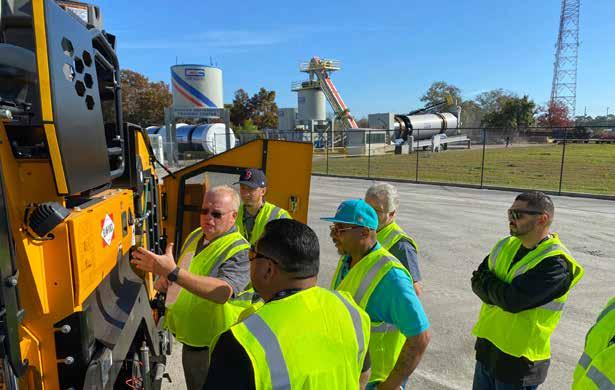
the latest DOT requirements.
multiple
its popular
to
• School Name: N/A
• APA offers in-person and online training throughout the year to anyone interested in increasing their knowledge of asphalt. Some webinars have a fee; others do not.
• Visit driveasphalt.org/events/all
• School Name: Asphalt Paving 101
• AsphaltPro Magazine offers a virtual training course for paving contractors available anytime you want it. There is a one-time fee for the online course to make it available to your entire crew on all your devices.
• Visit TheAsphaltPro.com’s training tab
• School Name: Asphalt Road Construction Schools
• Astec offers in-person training with a unique combination of lectures and hands-on practice in the plant and paving categories for customers and dealers who pre-register. There is a fee for training; classes in January, February and March typically sell out quickly.
• Visit AstecIndustries.com/service/training or call (423) 827-1899
• School Name: none
• B&S Light offers hands-on training inperson at the customer’s site to those customers who request it.
• Call (918) 342-1160
Blaw-Knox Corporation, a division of Gencor Industries
• School Name: The Blaw-Knox University
• Blaw-Knox offers in-person training courses on paver operation and maintenance and best paving practices for dealers and customers in January and early February 2023. Class size is limited.
• Visit BlawKnox.com/training or call (407) 290-6000 ext. 342
BOMAG Americas Inc.
• School Name: N/A
• BOMAG provides in-person training and e-learning for customers, dealers and potential customers. There is a fee for training.
• Contact marketing.ba@bomag.com
Clarence Richard Company
• School Name: Asphalt Plant Operation Schools
• Clarence Richard offers web-based plant training for any plant personnel. The fee for training varies based on which multi-day course is needed.
• Visit ezFloWeighing.com
Command Alkon
• School Name: Regional TRAININGDAYS
• Command Alkon offers in-person training through the school, Regional TRAININGDAYS, and customers can arrange online training within their product group(s) outside of the school. There is a fee for training.
• Visit commandalkon.com/trainingdays
Gencor Industries
• School Name: Gencor Advanced Training School
• Gencor Industries offers in-person training to improve overall plant production and efficiency. Classes are for hot-mix asphalt producers that own and operate HMA facilities. There is a fee for training and class size is limited. To secure a seat for the January and early February classes, please register before Nov. 15, 2022.
• Visit Gencor.com/training or call (407) 2906000 ext. 342
Geophysical Survey System Inc.
• School Name: GSSI Academy
• The GSSI Academy offers over 100 classes taught in Nashua, New Hampshire, and Henderson, Nevada, on the use of ground penetrating radar (GPR) as a quality control/ quality assurance (QC/QA) tool and how to use GSSI equipment.
• Contact sales@geophysical.com or (800) 524-3011 or visit geophysical.com
• School Name: Top Quality Paving & Training
• John Ball offers in-person, on-site training of paving crews and in-person seminars through his Top Quality Paving & Training consulting service; and offers virtual training through the online course Asphalt Paving 101 with AsphaltPro Magazine. There is a fee for a week’s booking or a speaking engagement.
• Contact tqpaving@yahoo.com or call (603) 493-1458
• School Name: none
• Meeker offers in-person training for customers. There is a fee for training.
• Visit MeekerEquipment.com
• School Name: Hotmix University
• Stansteel hosts in-person training in Louisville and offers periodic “Hotmix How-to" webinars for asphalt plant managers/superintendents and plant managers. There is a fee for training.
• Call (502) 245-1977 or visit HotmixU. com
Tarmac International Inc.
• School Name: none
• Tarmac offers in-person training and online meetings for trouble-shooting to customers and potential customers. Fees vary depending on the situation.
• Call (816) 220-0700
TransTech Systems Inc.
• School Name: TransTech Systems Density Clinic
• TransTech offers in-person and online training. Clinics are by appointment. There is no fee if training is conducted at the TransTech facility.
• Call (800) 724-6306
• School Name: WEM Training School
• WEM offers in-person and online training for all employees who use the products. There is a fee for training.
• Visit WEMAutomation.com/training
• School Name: none
• Willow Designs offers in-person, onsite training and provides conference calls when needed. Training is focused on contractors who are usually clients. There is a fee unless the client has selected the package of Notch Wedge systems with the 8-hour shift of support included.
• Call (717) 919-9828
• School Name: Wirtgen America’s Center for Training and Technology (CTT)
• Wirtgen Group offers in-person training at the CTT for customers, dealers, employees and the road construction industry. There is a fee.
• Visit Wirtgen-Group.com/en-us
Join us for Hotmix University in Louisville, Kentucky. During the intense exchange sessions, participants enjoy a combination of lectures and hands on workshops on actual equipment.
PLANT MANAGERS are interested in making their plants run better while maintaining maximum profitability. Other topics include:
Industry changes and trends which require Plant Response/Modifications.
Tuning Plant Asphalt Automation to achieve 100% End Results and Project Bonus Pay.
Importance of Combustion and Air Systems to Achieve Production Rates.
Benchmarking and Measuring Plant Performance.
PLANT OPERATORS will invest half of their course time with hands on demonstrations of asphalt equipment. The other half of the course time will be invested in learning via classroom-style presentations. Topics include:
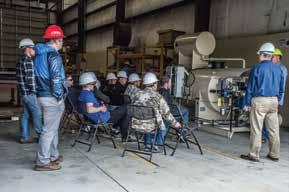
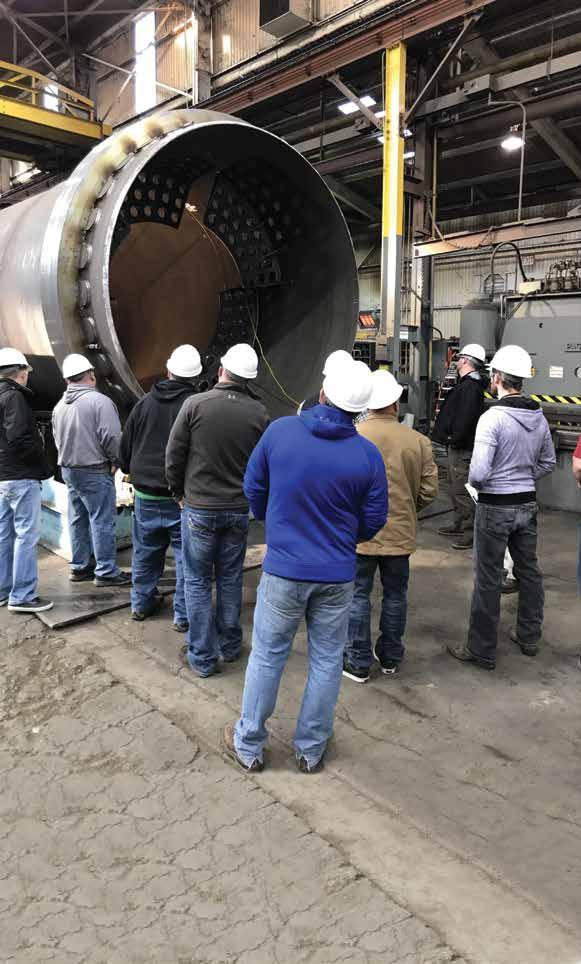
Specifies where the Hotmix Asphalt Plant fits into the entire business operation including the management of aggregates, liquid A.C., paving, and quality control.
Dr ying Systems: Alignments, flighting, and troubleshooting.
Slat s & Silo System monitoring and wear-reduction. Plant Automation and Multiple Liquid Blending.
overall plant production and efficiency
all common concerns for plant owners and operators. Having a well-trained technical crew is vital to maintaining plant performance and efficiency.
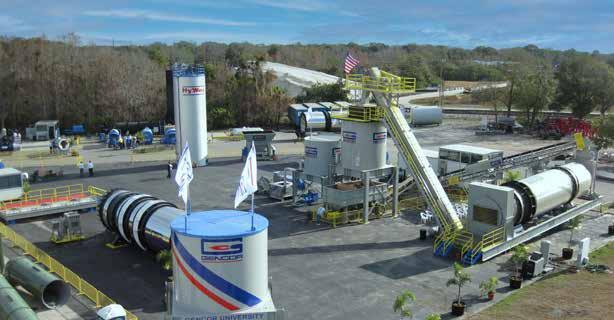
and its training staff represent the biggest concentration of knowledge and expertise in all the sciences and technologies involved in the production of asphalt plants. Customers who attend these seminars benefit by having the support and focused attention of the best specialists in the asphalt industry.
Gencor’s state-of-the-art control simulators and actual equipment, our experts take you stepby-step through a comprehensive & intensive concentrated hands-on training program providing the latest techniques on optimizing production efficiency.
a world of experience to build that road. As the global leader in road construction




minerals
we‘ve seen just about everything
is to see. In every climate, every condition, every twist, turn and terrain. And we put that world of experience in your hands, so you can use Smart technologies to perform better and provide results that drive efficiency in every phase of the road construction cycle.

This month’s product gallery focuses on paving equipment, pavement main tenance and preservation equipment, and the services and materials used to com plete paving and maintenance projects. The team at Road Widener LLC, headquartered in Delafield, Wisconsin, wanted to share with you the increased versatility of its offset vibra tory roller attachment with its new spray bar system. Here’s what they’ve written about it:
This spray bar system accessory fits on all offset vibratory roller attachments and aids in suppressing dust particles, compacting aggre gates and preventing clumping when rolling hot-mix asphalt (HMA). It is designed to be easily attached to the offset vibratory roller, a compaction attachment that allows the host machine to drive safely on flat ground while compacting shoulders, ditches, trenches and other hard-to-reach areas alongside the road. The spray bar system will allow contractors to increase efficiency and versatility when com pacting a variety of materials including as phalt, stone, gravel and topsoil.
“As a company that prides itself in provid ing unique, profitable solutions, we are always looking for ways to improve our products,” said Lynn Marsh, Road Widener LLC pres ident. “We’re excited to now offer the spray bar system for the offset vibratory roller. We knew the attachment was capable of many forms of compaction, but it was not until the product reached our customers that we re alized its full potential. We listened to their feedback and designed a spray bar system that heightens the capabilities of this already one-of-a-kind product.”
Road Widener’s watering system delivers water to the drum surface with a spray bar rail that mounts to the frame of the offset vi bratory roller’s drumhead. This allows for wa ter to be delivered directly to the drum sur face, offering an efficient way to ensure prop er coverage.
For customers that have no current water delivery system, the company offers a com plete system that includes two 7-gallon water tanks for each side of the compaction roller, pumps and tubing, as well as the spray bar. The tanks for this system are mounted on the frame of the offset vibratory roller near the at
tachment plate so that the unit can be moved to other host machines while retaining its ability to deliver water. Alternatively, the company offers the system minus the storage tanks and pumps for customers that already have a water storage tank on their machine. With this option, they can simply connect the Road Widener spray bar system to their ex isting tank.
The offset vibratory roller offers contrac tors a safe option over self-propelled com paction machines that have a great risk of tip ping on uneven terrain. The attachment’s off set, patented design allows the host machine to drive safely on flat ground while compact ing sloping shoulders, ditches, trenches and other hard-to-reach areas alongside the road. These are tasks that have traditionally put road crews in danger of rollover accidents, in creased workers’ comp costs and led to poor safety ratings.
“The United States Department of Trans portation’s Road to Zero Deaths initiative is a program we feel strongly about,” Marsh said. “We’ve worked in the road construction industry and know firsthand the challeng es and dangers crewmembers are up against each day. This led us to engineer a solution to heighten safety with an offset design. We be lieve that our offset vibratory roller will help achieve the goal of Moving to Zero because it truly offers incomparable compaction safety.”
The offset vibratory roller has a total reach of 9 feet and can be purchased with a 2-, 3or 4-foot-wide drum. The drums can piv ot up to 30 degrees, reach up to 30 inches below the mounting point, and are inter changeable. This allows road crews to take on jobs of varying sizes and aggregates by purchasing additional drums instead of in vesting in multiple self-propelled machines. Additionally, the vibratory feature operates between 2,500-3,500 vibrations per minute for optimal compaction.
The offset vibratory roller attaches to any host loader, skid steer, compact track load er or road grader by inserting the host ma chine’s lift arm pads into the offset vibratory roller’s universal mounting pad. All the func tions for the offset vibratory roller, including the movement of the offset arm, the twist of the roller head, and the float and vibration
Road Widener’s new spray bar system makes the Offset Vibratory Roller attachment more versatile. This accessory aids in suppressing dust particles, compacting aggregates, and preventing clumping when rolling hot mix asphalt.
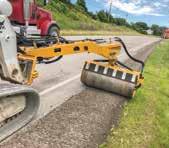
settings, are controlled via a wireless remote control that the operator keeps with them in the cab of the host machine.
An adapter plate is also available for host machines like compact backhoes and tele scopic loaders that may not be readily set up to accept standard attachments. It is com patible with standard and high-flow hydrau lics. The attachment operates without an en gine, powertrain, or any associated parts of its own, which makes for less maintenance than self-propelled machines while also re ducing labor.
For more information, visit the Road Widener website or call (844) 494-3363.
And to see what other paving-related prod ucts and materials have been released this summer, check out the next few pages of list ings. Let them know you saw their informa tion in the pages of AsphaltPro Magazine.
AMIGUARD™ from Asphalt Materials Inc., town, state, is a rapid penetrating emulsion (RPE) that is formulated to penetrate quick ly into material. Its reduced surface tension allows it to seep into the pavement voids quickly during pavement construction or maintenance so traffic can be returned to roadways quickly.
For more information, visit www.asphaltmaterials.com or www.thejointsolution.com.
Blaw-Knox Corporation, Chambersburg, Pennsylvania, a division of Gencor, offers the new Blaw-Knox PF-7110B tracked paver. The company calls attention to its all-around vis ibility and ease of operation. The paver in cludes an automatic track tensioning system for smooth paving on various terrain. It fea tures a Tier 4 Final D8 235-horsepower (175 kW) engine. It features a basic width of 10 feet with extensions up to a maximum paving width of 26 feet and a hopper capacity of 13 short tons. Screed attachments for this high way class paver include:
• the wedge-lock with maximum paving width of 16 feet;
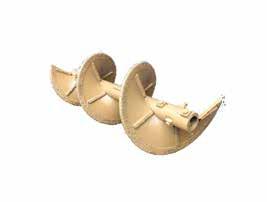

• the ultimat with maximum paving width of 20 feet;

• the omni 318 with maximum paving width of 18 feet, 6 inches; and

• the optimat 320R with maximum paving width of 19 feet, 6 inches.
For more information, visit www. BlawKnox.com.
John Deere, Moline, Illinois, is building upon its line-up of compact equipment by expand ing its performance tiering strategy with three new models of compact wheel loaders. The new G-tier models include the new 184 G-tier, and the 204 G-tier and 304 G-tier ma chines. The 184, 204 and 304 G-tier compact wheel loaders are designed to provide solu tions for customers in applications such as landscaping, agriculture, snow removal, site development, and rental.
The models come standard with limited slip differential, which automatically engag es if one wheel loses traction. The optional ride-control reduces spillage from the bucket when traveling over rough terrain, reducing
job site clean-up, and improving ride quality for the operator and can also be set to engage and disengage at certain speeds.
Featured on all G-tier models, the for ward-thinking cab design is offered in both a canopy or enclosed cab configuration. Built with operator visibility in mind, the rede signed enclosed cab features a frameless, ful ly glass door, floor-to-ceiling front windshield and remounted machine display, providing a
clear line of sight to machine surroundings. The right-side full glass window also swings out 180 degrees. Additional features include an adjustable steering column, slip-resistant steps, and an optional LED lighting package. The cab includes amenities such as improved air con ditioning systems and ergonomic low-effort controls (when compared to John Deere L Se ries compact wheel loaders) to keep operators comfortable during a long shift.
The largest of the three new models, the 304 G-tier, has a travel speed of 18.6 MPH (30 km/h). Its design offers improved oper ator visibility (when compared to John Deere L Series compact wheel loaders) and overall machine stability with the increased machine size, which is now measured at 8 feet, 8 inches in height, with cab and 6 feet, 5 inches wide. The John Deere 184, 204 and 304 G-tier com pact wheel loaders are now available for pur chase in the United States and Canada
For more information, visit your local John Deere dealer.
Dynapac North America announced in Au gust that the company has been awarded a cooperative purchasing agreement for its full product portfolio of soil and asphalt rollers, compact equipment, pavers and feeders from Sourcewell.
Sourcewell is a self-sustaining government organization offering a cooperative purchas ing program with more than 400 competi tively solicited contracts to government, ed ucation and non-profit entities throughout North America. Dynapac was awarded this Sourcewell contract after a diligent proposal process that resulted in a contract that meets, or exceeds, mandated requirements.
“The partnership between Dynapac and Sourcewell will continue to provide jobsite confidence, high productivity, high quali ty equipment to local state and municipali ties,” said Jim Bansen, senior director of deal er sales and channel development. “This con tract will help our customers complete ef fortless competitive bidding compliance and extend our dedicated commitment to being your partner on the road ahead.”
EarthCam Inc., Upper Saddle River, New Jersey, announced in August its partnership with Raken, Carlsbad, California, to make high-resolution live streaming video avail able within Raken’s construction manage ment platform. More than 39,000 contrac tors use Raken worldwide to streamline proj ect management and communication. This new collaboration provides live video data from EarthCam cameras for 24/7 insight on construction projects for safety, security and progress reporting. In addition to featur ing live-streaming video, users will be able to switch between historical timelines, high
ly-detailed gigapixel panoramas and con tinuous security recordings without leaving the Raken platform. The EarthCam-infused Raken experience extends the capabilities for sharing jobsite camera content, 360° site tours, and AI-edited time-lapse videos. The integration is now available free of charge for EarthCam enterprise clients.
Earthwave Technologies, Indianapolis, has integrated its e-ticketing functionality with OnStation to allow users to pinpoint the ex act station location where each load of as phalt is placed on a job site. This new func tionality automatically tracks the load from the time it is loaded at the asphalt plant, through its dumping into the paver on the job site. The exact station location becomes a part of the digital e-ticket, with no oper ator intervention required. Operators and transportation agency officials can know precisely on a job site where a specific load of asphalt was laid, so that if a future prob lem arises, they can investigate other pa rameters around that location, including core tests, density, drainage or others, to determine the scope of the problem. Specif ic station locations on each e-ticket replace the latitude/longitude indications which are commonly included now, but which are not readily referenceable on the job site.
This versatile functionality is also appli cable for loads of aggregate or other mate rials commonly used on road construction job sites. Because it is automatically add ed to the e-ticket, the information is read ily available to DOT and construction crew personnel, whether they reference it in a week or a year.
When a FleetWatcher equipped truck en ters a jobsite geozone, the vehicle’s latitude/ longitude is sent to OnStation. After verify ing that it is part of the project, OnStation returns the station, alignment and offset where the load is deposited, which then be comes part of the e-ticket. The e-ticket then flows normally though to the DOT and construction crew personnel. The process occurs automatically and replaces manual tracking systems. Additionally, this station ing information about each load is main tained in Fleetwatcher indefinitely for fu ture use.
For more information, contact a, Earthwave team member at (800) 553-0027.
Elgin Sweeper Company, Elgin, Illinois, re leased its compact Broom Badger this sum mer. The sweep path of the new Broom Bad ger has been increased to 120 inches includ ing dual, 42-inch side brooms. Redesigned hydraulics system is designed to increase pro ductivity. Upgraded operator controls are de signed to be easy for new operators to learn and understand. Curved edges in the sweep er’s elevator reduce noise. For easy servicing and upkeep, the elevator cover opens wid er for cleanout. Like all Elgin products, the Broom Badger is available with the LIFELIN ER hopper system, which is designed to im prove the life, durability and functionality of the hopper. Advanced hydraulics also enable easier servicing while reducing waste.
Elgin’s strong dealer network enables eas ier access to servicing and parts. With more than 100 years in the sweeper industry, El gin experts are able to customize sweepers to fit specific needs. Operator training then en sures maximum productivity on the job while the extensive dealer network is available to answer questions and provide service for the life of the sweeper. No CDL is required, which helps recruitment and operator schedules.
General Equipment Company, Owatonna, Minnesota, has released the model 102 BIT TYBREAKER™. It is a manual impact break er/tamper designed to provide a simple alter native to jackhammers, sledgehammers and pickaxes to break concrete or frozen ground, cut asphalt, tamp dirt, chop roots, or remove ceramic tiles and brick pavers. It features a lightweight, thin barrel design; weighs 21 pounds; has a Posi-Grip handle; and includes internal piston and barrel constructed of sol id steel, to produce up to 1,450 foot-pounds (1,966 N.m.) of energy per blow. The BITTY BREAKER accepts tools that have a 1.125inch hex shank, including those from com petitive manufacturers. Several chisel/spade accessories are available directly from Gener al Equipment. An integral tool retention sys tem on the unit helps prevent the tools from falling out during use.
For more information, call (507) 451-5510.
Geophysical Survey Systems Inc. (GSSI), Nashua, New Hampshire, offers the PaveS can RDM 2.0 as a full-coverage asphalt

density measurement system to identify vari ations in road quality in real-time and that system is discussed in depth in the June edi tion’s New Tech department of AsphaltPro.
More recently, the company showcased its UtilityScan DF at the American Public Works Association’s Public Works Expo (PWX) in Charlotte, North Carolina, Aug. 28-31. GSSI’s ground penetrating radar system is for com plex jobs that have multiple targets that may be buried shallow or deep. With two antennas, 300 MHz and 800 MHz, built into one system, contractors can view shallow and deep targets simultaneously in a single scan on the screen. Due to the antennas built into the UtilityScan DF, this system can be used for a multitude of applications including utility detection prior to milling or digging. Both metallic and non-me tallic targets can be identified, and GSSI’s pat ented LineTrac technology gives users the abil ity to detect AC power and induced RF energy present in buried utilities.
The UtilityScan DF system comes with a 2-year warranty and training classes. GS SI’s Academy offers over 100 classes taught in Nashua and Henderson, Nevada. Wheth er you’re new to ground penetrating radar (GPR) or need a refresher, the training class es are beneficial to understanding how to use the equipment.
For more information, visit https://www. geophysical.com/products/utilityscan-df.
Optronics International, Tulsa, Oklahoma, has introduced its STLW and STL FusionX family of combination stop, tail, turn, back up and warning lights. Featuring a signature “X” LED lighting array in their centers, and available in eight SKUs, the FusionX lamps are the newest members of Optronics’ pop ular Fusion Series combination lamps for use on your work truck, mechanic’s truck, crash attenuator and so on.
Before the introduction of Optronics’ Fu sion Series LED combination lamps in 2014, vehicles used separate 6-inch oval or 4-inch round stop, tail, turn lamps and backup lamps. Each lamp needed its own mounting hole, and these holes were made in the vehi cle body panels, frame posts, docking plates or gussets. Optronics Fusion lamps consoli date multiple lighting functions into a single lamp footprint.
The addition of a compliant warning light function in the FusionX was a logical next step
in the evolution of the Fusion Series. Optron ics’ FusionX LED combination lamps also dis able the warning light function as soon as the brake light is illuminated. The warning over ride feature helps eliminate potential misinter pretations by others on the road or worksite and allows the FusionX to fully meet FMVSS 108 requirements, according to the manufac turer. The lamps also meet the SAE J595 stan dard for Class 2 and Class 3 directional warn ing lamps. The FusionX STLW lamps, with their warning light, have four preprogrammed flash patterns to choose from. Their central ized x-shaped LED array serves as both a white backup light and a white, amber or alternating white and amber warning flasher with two ca dences to choose from. Multiple lamps can be wired to operate flashers either asynchronous ly, or be connected, allowing users to achieve synchronized illumination patterns. STL ver sions of the lamp are also available without a warning function.
The lamps come in grommet-mount ver sions, as well as surface/flange-mount ver sions. The STLW314MSHB is also available in the STLW314MGHB grommet-mount ver sion. The STL316MSHB is also available in the STL316MGHB grommet-mount version. The STL314MGHB is also available in the STL314MSHB surface/flange-mount version. The STLW316MGHB is also available in the STLW316MSHB surface/flange-mount version.
The lamps come hardwired and ready to in stall. As an integrated electrical system solu tions provider, Optronics is also able to con figure the lamps with industry standard con nectors by request. FusionX lamps are avail able in both bulk and polypack packaging.
For more information, contact Dorian Drake at (914) 697-9800.
Vogele, a Wirtgen Group company, Antioch, Tennessee, has introduced the “Dash 3” pav er generation to the North American market.
The 8-foot SUPER 1700-3i track, 8-foot SU PER 1703-3i wheel, the 10-foot SUPER 20003i track and 10-foot SUPER 2003-3i wheel pavers are in this group and are available with a range of screed offerings, including front- and read-mounted vibratory screeds to high-compaction screeds. The new pavers in clude the ErgoPlus 3 operating system, Voge le EcoPlus and PaveDock Assistant.
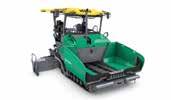
The company’s website shows the pavers in this group have a basic paving width of 8 feet,
The SUPER 1700-3i is a tracked paver in the 8-foot class, conceived especially for the North American and Australian markets.
6 inches, and a maximum paving width of 19 feet, 6 inches. They feature a nominal output of 173 horsepower and have a maximum lay down rate of 770 U.S. tons per hour.
For more information, visit www.wirtengroup.com/america.
Western Global, Sacramento, announced in August the addition of its third U.S. facility, located in Sacramento. This facility joins the company’s locations in Troy, Michigan, and Pineville, North Carolina, as part of its com mitment to add local support and reduce shipping times for customers throughout the United States. The addition of the new Sac ramento location enhances Western Glob al’s focus on sustainability. The company is reducing carbon emissions by minimizing the distance trucks need to travel to ship its products to their destinations. In addition to this positive environmental impact, Western Global’s products support customers in their own efforts to reduce carbon emissions. The transportable TransCube Global fuel tanks accommodate petroleum diesel as well as re newable diesel, offering advanced options for fleets to focus on environmental impacts.
Jeremy Shepherd and Jeff Lawrence will provide leadership at the Sacramento facility. Shepherd, a regional sales manager at West ern Global, has 20 years of experience work ing for industrial equipment manufacturers. Before his time at Western Global, he was a regional sales manager for a manufactur er of fluid handling products. Lawrence is a national account manager at Western Glob al and brings 35 years of experience in the equipment industry to his role. Before join ing the Western Global team, he had national account management roles for two different equipment manufacturers with a focus on the western region of the U.S.
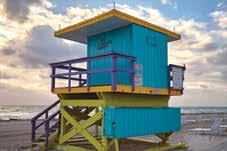

Honeywell Safety Watch is a real-time location solution (RTLS) for industrial applications designed to provide companies with information about their workers and as sets, while also enhancing employee safety.
“Knowing where employees are not only prevents delay in proj ects, but can help locate employees in real time in case of an emer gency,” said Veronica Turner of Honeywell Process Solutions’ plant and personal safety division. “We see the trend of digitali zation and the need to remotely monitor the wellbeing of employ ees. RTLS is a smart, digital way to manage the workforce, to know who is on the job, what they’re doing, and that they’re doing it in a safe way.”
Launched in May 2022, Safety Watch is a customizable turnkey solu tion that relies on employees wearing a wireless tag about the size of a deck of cards. “Safety Watch is similar to the access cards many of us use at work, but with an RFID chip that connects to the Safety Watch receivers on site,” Turner said, adding that these active wireless tags can be integrated into existing employee badges.
The RFID devices wirelessly connect to one or more receivers set up around the plant to send location data to Safety Watch’s onsite servers and, ultimately, to the customer’s Safety Watch administrator via the Safety Watch Dashboard.
With one receiver on-site, that receiver can determine how many active devices are within a radius of 492 feet (150 meters). Two receiv ers are required to track separate entry and exit points. With three re ceivers, Safety Watch can be used to triangulate wearers’ locations, ac curate to within 10 to 16 feet (3 to 5 meters).
The customer’s Safety Watch administrator(s) can also set certain parameters of who gets notified when an event has occurred. For ex ample, if an employee is late, has entered a location they’re not sup posed to be, or is suspected to have fallen.
“We work with our customers to create those rules, of who in their organization receives alerts for different types of events,” she said. “That’s the advantage of a turnkey solution like Safety Watch.” It’s also possible to set up multiple geofences within the plant or site with lim ited access based on rules set for each employee’s Safety Watch.
Although Safety Watch relies on WiFi and therefore works best at static locations, Turner said Honeywell plans to make the system LTE-compatible in the future so it can be used on moving job sites like the paving train.
Safety Watch’s RFID devices for employees have a number of fea tures to enhance safety at the plant. This includes an SOS button employees can push in the event of an incident. The device can also automatically identify if the wearer has fallen.
Safety Watch is a customizable turnkey solution that relies on employees wearing a wireless tag about the size of a deck of cards that connects to one or more receivers set up around the plant to capture location data.
“If [Safety Watch] sees that an employee has experienced an im pact followed by no movement, it will trigger an alarm,” Turner said. Those whom the company’s Safety Watch administrator has set up to receive these alerts will automatically be notified.
The device can also help monitor worker fatigue, by identifying hazardous area movements or by monitoring minimum break re quirements, for example.

Safety Watch also has a last known location feature. “In the event of an earthquake, explosion, fire, etc., where employees must evacu ate quickly, Safety Watch can help identify where that employee was the last time their device was pinged,” Turner said. This feature can also assist in rescue efforts in the event of such emergencies.
Turner said Safety Watch can also be used to reconcile safety inci dents, for example, if an employee was in an area they were allowed to be when the incident happened, if they followed pedestrian paths through the plant, or if they were running.
Safety Watch can also be used for automatic sign in/out, mon itoring restricted area access and calculating time on-site. “The
solution offers customizable data reports for the user,” Turn er said. “Simply input the data requirements

the solution
create the report. For example, time in/out reports de rived from the solution can be shared to a payroll department as a data source.”
Turner discussed how employees’ sign in/out procedures are often manual and therefore aren’t easily shared across the var ious departments that need that data.

“Instead of taking hours to know where employees are, hav ing to do manual headcounts, or forcing people to swipe in and out, managers can more easily account for people with Safety Watch,” Turner said. “It’s a huge jump from what is often a complex manual process to a digital, user-friendly solution that can be used to manage an entire enterprise.”
“Safety Watch ensures the workforce is going where they’re supposed to go and doing what they’re supposed to be doing,” Turner said, adding that it can be used to identify employees’ effective working time versus present time. “For example, if I sign in but it takes me half an hour to get to my post because I’ve been visiting with my buddies, that can be accounted for.”
Although workers may not appreciate that level of moni toring, Turner said Safety Watch’s safety features should be a selling point for employees. “Knowing the company is mak ing an extraordinary effort to enhance safety is something they shouldn’t be hesitant about,” she said. “They can feel more se cure, knowing that the company is doing what it can to provide them a safety net.”




Doppler lasers send out a signal, which reflects back from the moving pavement.
Additional imaging systems can be affixed to the dash or back of the vehicle to gather additional data from the road.

Servo system and inertial units continuously monitor and control the position of the Doppler sensors.
Data from subsystems are synchronized with the structural data in real time, giving the end user all the data in one computer drive.

While the use of traffic speed de flectometer devices (TSDDs) has been around a number of years, complete with MnROAD testing the TSD truck, departments of transportation like South Carolina are considering the technology for use in pavement manage ment systems (PMS) as of late. The techni cal report “Evaluation of Traffic Speed De flectometer for Collecting Network-Level Pavement Structural Data in Tennessee,” authored by Baoshan Huang, Miaomiao Zhang, Hongren Gong and Pawel Polaczyk, released May 2022, found that TSD test ing is time-efficient and suitable to identi fy weak sections and weak layers of pave ments. The device used in the Tennessee re search was the TSD from Greenwood Engi neering. Here’s how it works:
The truck drives over the network to be evaluated at posted traffic speeds.
In the TSD, a set of 10 or more Doppler la sers sends out a well described signal, which when reflected from the moving pavement has changed wavelength depending on the pavement velocity.
The Doppler lasers measure the pave ment-motion in front of and behind the load wheel to picture the full deflection bowl, and in the longitudinal centerline between the twin tires of the trailer.
The TSD provides the full picture of the de flection bowl with well-known values like Sur face Curvature Index 300 (SCI 300), maxi mum deflection (d0) and more. Servo system and inertial units continuously monitor and control the position of the Doppler sensors. Subsystems—like the surface imaging sys tem, right-of-way-imaging or ground pen etrating radar—mounted on the dash of the
truck’s cab and/or on the back of the trailer, gather additional data from the road.
Data from subsystems are synchronized with the structural data in real time, result ing in a set of all data for the road network, all obtained in one drive. The data can be displayed in web-based map systems, if the user desires.
For more information, contact: Karsten Jensen at kj@greenwood.dk or visit https://greenwood.dk/road/tsd/
WEB EXTRA
Read the 71-page report, RES2020-08, at http://www. tn.gov/.
Our portable plant configurations feature a variety of components including jaw crushers, cone crushers, impact crushers and a variety of screening plants. Without sacrificing power or productivity, portable options deliver efficient and reliable performance with extra portability and adaptability.

Scan to see the full line of portable products.
